The Curious Case of The Rolling Stones' Tattoo You
In 1981, Mick Jagger and Keith Richards were barely speaking, much less writing music together. But with an impending tour, they needed a new record. How the album—famously considered their last great one—came together is now the stuff of rock n' roll legend.
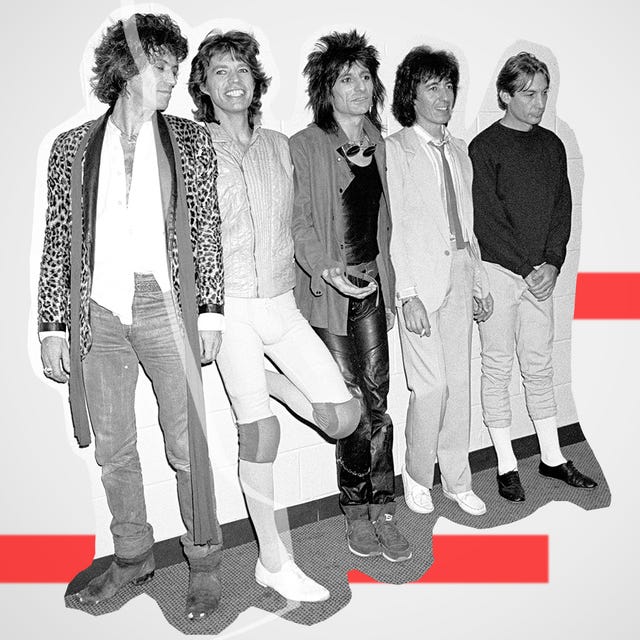
Every product was carefully curated by an Esquire editor. We may earn a commission from these links.
It was 1981, and the Rolling Stones were stuck. They had committed to a massive summer tour, and they didn’t want to waste the opportunity to promote a new record. But Mick Jagger and Keith Richards were fighting—barely speaking, much less writing any new songs—and the clock was ticking. “There was no time to make a whole new album and make the start of the tour,” said Richards, in 1993.
The band’s longtime engineer, Chris Kimsey, came up with an elegant solution. They had released five albums in the previous seven years, so maybe, he reasoned, there were enough worthy outtakes or unfinished drafts to assemble a record. “I spent three months going through like the last four, five albums finding stuff that had been either forgotten about or, at the time, rejected,” said Kimsey in a 1982 interview. “And then I presented it to the band and I said, ‘Hey, look, guys, you’ve got all this great stuff sitting in the can and it’s great material, do something with it.’"
The result, released forty years ago today, was Tattoo You —ultimately, one of the most curious entries in the Rolling Stones’ discography. It was the last album by the band to hit Number One on the US charts (though, to be fair, every single one of the Stones’ 24 studio albums since their 1964 debut, England’s Newest Hit Makers has reached the Top Five). Powered by the beloved opening track “Start Me Up,” it was certified four times platinum, a figure surpassed only by 1978’s six-million-selling Some Girls . Tattoo You is generally considered the last great Rolling Stones album, but it’s hard to believe that it works as an album at all.
Consider where band relations were around this time: Following that triumphant Some Girls release—an album which stared down the simultaneous challenges of punk and disco, as well as Richards’ high-profile drug arrests, to emerge victorious—they put out 1980’s underwhelming Emotional Rescue . And as the guitarist emerged from his heroin haze, he entered a new period of conflict with Jagger.
“It was the beginning of the ‘80s when Mick started to become unbearable,” wrote Richards in his 2010 memoir Life . He describes Jagger’s sense of absolute control over the band—“I realized that Mick had got all of the strings in his hands and he didn’t want to let go of a single one”—and recounts how the singer’s go-to response at the time was “Oh, shut up, Keith.” Meantime, guitarist Ronnie Wood, just a few years into his tenure with the band, was descending so far into drugs that he was almost barred from the 1981 tour.
So Kimsey’s idea, unorthodox though it was, was certainly worth a shot. He dug up alternate takes and sketches going as far back as the sessions for 1973’s Goats Head Soup . (Famously, the basic track for “Start Me Up” was recorded on the same day they cut the 1978 Number One hit “Miss You.”) Initially referred to as “Never Stop,” the song had a reggae arrangement, but Kimsey found a version in the vault that recast it as pure rock n’ roll; this discarded iteration launched what would eventually become one of the band’s most iconic riffs.
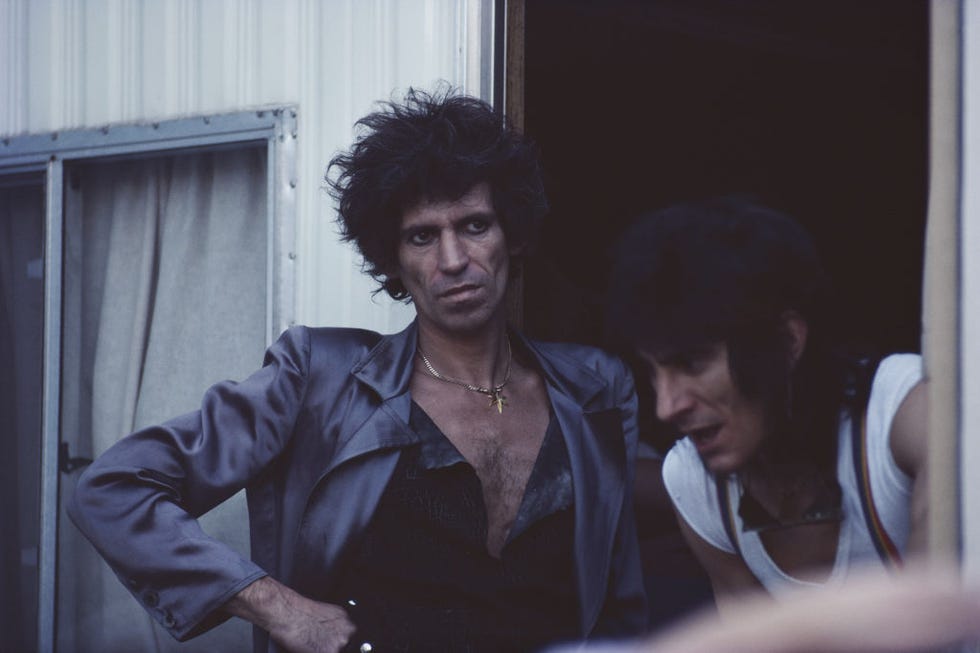
It was up to Jagger to write lyrics, record vocals, and finish the songs (maybe that power grab wasn’t all bad). “I put them all together in an incredibly cheap fashion,” he later said. “I recorded in this place in Paris in the middle of winter. And then I recorded some of it in a broom cupboard, literally, where we did the vocals. The rest of the band were hardly involved.”
Echoes of the earlier albums are clear if you’re listening for them: the funk groove of “Slave” lines up with 1975’s jam-heavy Black and Blue , and the jittery picking on Richards’ “Little T&A” has a similar edge to some of Emotional Rescue . But Kimsey made one insightful decision that was crucial to the success of Tattoo You ; his selection of material included a heavy dose of ballads, which were eventually grouped together on the album’s second side and created something entirely unique in the Stones’ body of work.
That run of songs—the magnificent “Worried About You,” “Tops,” “Heaven” (which is, oddly, the third-most-streamed cut on the album), “No Use in Crying,” and the irresistibly bittersweet closer “Waiting on a Friend,” one of three tracks on which jazz saxophone colossus Sonny Rollins added a glorious solo—still comes as a shocking surprise. The tracks have a dreamy, hazy sensation, and Jagger delivers some stunning falsetto vocals, emotive without being overly theatrical. Playing almost like a suite, this second half of Tattoo You pointed toward a brand-new, more mature direction for the Stones…which never really came to fruition.
Time for a confession: I’ve never really liked “Start Me Up.” It always felt too formulaic, like the Stones were consciously trying to write an anthem. The rest of the rock songs on Tattoo You are fine—and Charlie Watts plays his ass off, with his drums given a sparkling treatment in Bob Clearmountain’s mix. But can anyone really argue that “Hang Fire” or “Neighbors” are truly A-List Rolling Stones songs?
Still, there’s a consistency to the album that’s especially impressive given the circumstances of its assembly, maybe because they were being guided by Kimsey, a voice outside the band with more objective ears. Robert Palmer, the always-astute rock critic at the New York Times , noted the difference from the genre exercises and trend-chasing that defined much of the group’s ‘70s efforts. “None of them are Chuck Berry retreads, none of them are disco, and none of them are reggae,” he wrote, “they are all rock-and-roll, with more than a hint of the soul and blues influences that were so important in the band's early work.”
Forty years later, it’s hard to listen to Tattoo You without the baggage of its place in Rolling Stones history, its mantle as their final important recording. It was followed by the lackluster Undercover , the sour (though underrated) Dirty Work , and then years spent apart before entering the elder statesmen role assumed when they regrouped for Steel Wheels in 1989.
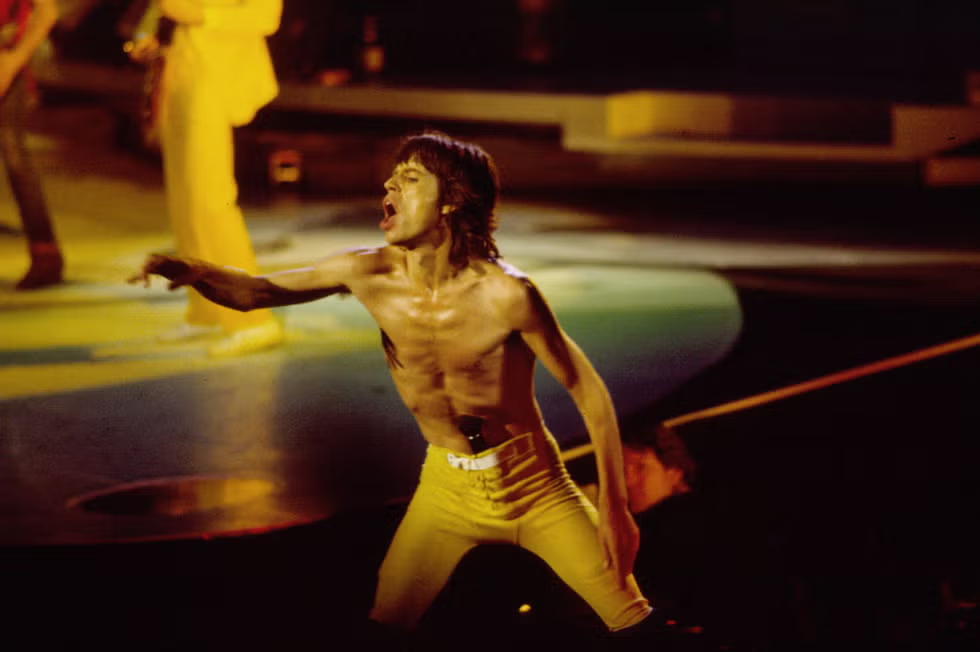
In October, the band will unveil a deluxe reissue of the album, with nine unreleased tracks (last week, the first of these—“Living in the Heart of Love,” an outtake from 1974’s It’s Only Rock and Roll —came out, and an alternate take of “Start Me Up” will be included). But what can that actually mean? What are outtakes from an album of outtakes? If it’s an excuse to put out some favorite ’70s rarities, so be it, though it would be far more interesting to hear some of the raw, incomplete tracks that Kimsey dug up en route to the final album.

Tattoo You, 2021 Box Set
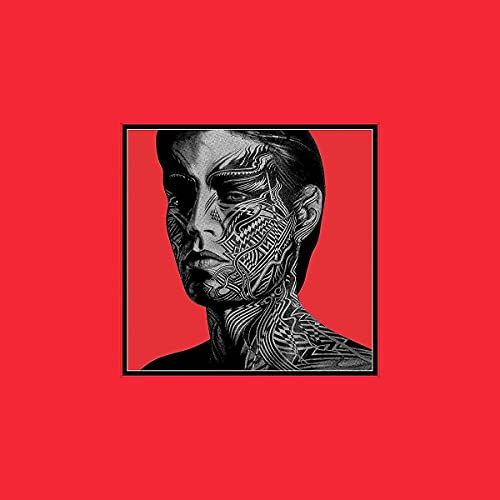
The Rolling Stones continue to be one of rock’s greatest experiments. Nearing the sixty-year mark, no one has ever sustained being a band for this long, and every day, they embark on a path with no blueprint. But the music on Tattoo You could have steered them toward a new musical chapter; instead, it ended up being the end of an era.
“I think it’s excellent,” Jagger said about the album, years later. “But all the things I usually like, it doesn’t have. It doesn’t have any unity of purpose or place or time.”
As for Richards, who claimed to like Tattoo You “very much,” the album doesn’t warrant a single mention from him in his autobiography. He was, at the very least, pragmatic about the unlikely genesis of this unlikely landmark. “With a band that goes on for a long time,” he said, “one way or another you end up with a backlog of really good stuff that, for one reason or another, you didn’t get the chance to finish or put out because it was the wrong tempo or too long—purely technical reasons.
“It’s stupid to leave all that great stuff just for want of finishing it off and getting it together.”

@media(max-width: 73.75rem){.css-1ktbcds:before{margin-right:0.4375rem;color:#FF3A30;content:'_';display:inline-block;}}@media(min-width: 64rem){.css-1ktbcds:before{margin-right:0.5625rem;color:#FF3A30;content:'_';display:inline-block;}} Music

‘The Tortured Poets Department’ Lyrics Are Wild
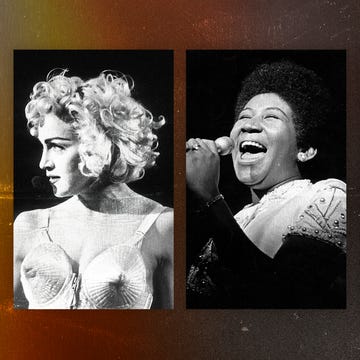
The Best Music Documentaries

‘Cowboy Carter’ Features 12 Collaborators

The Best Sad Songs of 2024 (So Far)

What I've Learned: Sheryl Crow

The Best Albums of 2024 (So Far)

The 35 Best Shows on Hulu
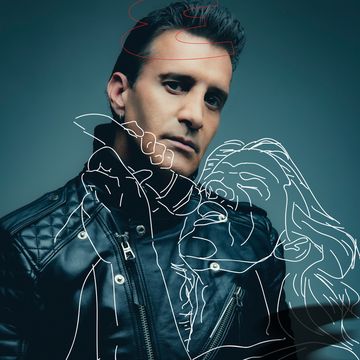
Scott Stapp Is Ready to Go Higher

The Black Crowes Are Ready to Fly Again

Meet the Guy Behind the World's Biggest Playlists

Every James Bond Theme Songs, Ranked
The Rolling Stones’ Last Great Album, ‘Tattoo You,’ Adds Bonus Tracks and Full Concert in 40th Anniversary Edition: Album Review
By Jem Aswad
Executive Editor, Music
- Peso Pluma Electrifies at Private Club Gig in New York for Sony Electronics 6 hours ago
- Prince’s ‘Musicology’ at 20: A Look at the Album, Tour and Year That Saved His Career 6 hours ago
- MTV’s VMAs to Return to New York in September 7 hours ago

After decades of not really dealing with their catalog, the Rolling Stones have been digging deep into their vaults for the past dozen years or so, releasing expanded versions of past albums, many full-length archival concerts, and finishing up old songs that they’d started recording decades earlier.
The latest in this series, released just a few weeks after the 40th anniversary of its original release (vinyl pressing plants are really backed up these days), finds the Stones rolling out a deluxe boxed set of the album that many agree was their last great studio effort, “Tattoo You,” which actually was less a new album than an odds-and-ends collection of songs from the preceding decade that they’d finished up, dating back as far as the “Goats Head Soup” sessions nine years earlier. Regardless, it’s one of the strongest albums from the Stones’ second decade, smartly splitting the sides — an important distinction in the vinyl era — into rockers on side 1 and the softer songs on side 2. For the super-deluxe edition, the group has tacked on nine bonus studio cuts as well as an entire 1982 concert.
The “Tattoo You” album proper not only gave the group a pair of big hit singles and videos to feed the then-brand-new MTV — the all-time classic “Start Me Up” and the ballad “Waiting on a Friend” — but a strong platform to present their biggest tour in several years, which rampaged across North American arenas for the entire fall of 1981 and Europe the following summer. There was no reinventing the wheel here — no controversial, disco-tinged songs like “Miss You” or “Emotional Rescue” or country tracks (serious or tongue in cheek), just a bevy of straight-up rockers like “Hang Fire,” “Neighbors,” “Black Limousine” on the first side and softer, hazier tracks like “Worried About You” and “Tops” on the flip. The arrival of guitarist Ron Wood as a full time member had completely rejuvenated the band after several years of dissolution and, beginning with 1978’s galvanizing “Some Girls” album, helped them lock in the hard-riffing template for most of what they’ve done since, and that formula was solidified with “Tattoo You.”
Popular on Variety
So that’s the 40-year-old part of this collection — what about the “new” stuff? The outtakes that the Stones have appended to past deluxe editions have largely been decades-old instrumentals or sketches that were gussied up with new lead vocals and overdubs, to varying degrees of success; the bonus cuts on “Exile on Main Street” and “Some Girls” feel kind of embalmed. While that happily is not the case here — all nine tracks are lively performances — they’re also not A-list songs. There are three covers — Dobie Gray’s soul ballad “Drift Away,” the Chi-Lites’ “Troubles a’ Comin’,” and a hot version of blues legend Jimmy Reed’s “Shame Shame Shame” — four originals that are energetic but a bit dashed off, and a reggae-tinged version of “Start Me Up” that is interesting but much less compelling than the familiar version (apparently, the group kept passing over the several-year-old song because this version was first on the tape and the rocking one was at the end).
That leaves the concert, which captures a June 1982 London stadium date from the second leg of the tour. It’s almost exactly the same career-spanning set featured in the “Let’s Spend the Night Together” concert film and the “Still Life” album recorded the previous autumn, including three relatively rare covers, “Going to a Go-Go,” “Twenty Flight Rock” and “Chantilly Lace.” There’s not much we haven’t heard before, but with this multi-month jaunt the Stones basically wrote the book for all the arena/stadium tours that followed, and it’s great to hear the group at this particular peak of their live powers — they would not tour again until the end of the decade. By the time they returned in 1989, the Stones were all well into their forties (or, in former bassist Bill Wyman’s case, his fifties), and were also well on their way to proving that a great rock band can put on monumentally entertaining and musically satisfying concerts well into their seventies and possibly beyond.
How much longer the Stones will continue without Charlie Watts, one of the greatest drummers in rock history and the backbone of the band, remains to be seen. But this album, and this concert document, cap their second decade — the period that set the template for everything that followed over the next three.
More From Our Brands
‘shōgun’ exits not with a bang but a whisper — and a place in tv history, home of the week: inside a stylish upstate new york hideaway that exudes bohemian charm, angel city fc renews three-year deal for back of the jersey sponsor, be tough on dirt but gentle on your body with the best soaps for sensitive skin, tvline items: id’s nick and aaron carter docuseries, outlander prequel cast additions and more, verify it's you, please log in.
- Best Four-Album Run in Rock
- Rock Hall 2024 Roundtable
- Geoff Downes Revives Asia
- Experience Hendrix Tour 2024
- Walsh Returns to Epiphany Scene

Rolling Stones’ ‘Tattoo You': A Track-by-Track Guide
Time was not on the Rolling Stones ' side in late 1980. The band had already agreed to a sweeping U.S. tour set for 1981 and then another round of shows in Europe the following year. Problem was there were only so many weeks available to construct an album to tour behind, leaving the Stones with only one place left to turn: their archives.
Revisiting sessions for recent albums like Some Girls and Emotional Rescue , as well as some that went as far back as Goats Head Soup , the band selected a slew of unfinished tracks and abandoned demos to create something brand new in time for the tour.
"They’re all from different periods," Mick Jagger recalled in a 1995 interview with Rolling Stone . "Then I had to write lyrics and melodies. A lot of them didn’t have anything, which is why they weren’t used at the time – because they weren’t complete. They were just bits, or they were from early takes. And then I put them all together in an incredibly cheap fashion."
In addition to being crunched for time, the Stones had another obstacle to overcome: a lack of cooperation among members. “ Tattoo You really came about because Mick and Keith [Richards] were going through a period of not getting on,” associate producer Chris Kimsey remembered in Craig Rosen's 1996 book The Billboard Book of Number One Albums . “There was a need to have an album out, and I told everyone I could make an album from what I knew was still there.”
Despite its unorthodox construction methods, Tattoo You arrived as a surprisingly cohesive album in August 1981, reaching the top of the charts - just like the previous six Rolling Stones albums, spawning some of the band's most popular songs. We take a look at these tunes and others in our track-by-track guide to Tattoo You below.
1. "Start Me Up"
"Start Me Up," Tattoo You 's opening tracks and one of the Stones' most all-time popular songs, was originally recorded as a reggae-style number called "Never Stop" during the Some Girls sessions. Then the band dipped into an earlier version. "That take on Tattoo You was the only take that was a complete rock 'n' roll take," Jagger said in 1995. "And then it went to reggae completely for about 20 takes. And that’s why everyone said, 'Oh, that’s crap. We don’t want to use that.' And no one went back to take two, which was the one we used - the rock track."
2. "Hang Fire"
Jagger and Richards, not exactly known for their subtlety, get straight to the point on "Hang Fire" — " In the sweet old country where I come from, nobody ever works, yeah, nothing gets done " — taking direct aim at England. "It serves them right for kickin’ us out," Richards said of the song in 1983, referring to the time the band left the country in 1971 as a result of a massive tax bill owed to the government. "It’s [England] coming to terms with a whole lot of problems that have been brewing for years, and the only thing it needed for these problems to come to a head was for the money to get tight." Like "Start Me Up," "Hang Fire" began life during the Some Girls sessions.
3. "Slave"
"Slave" may lack any real lyrical narrative, but it makes up for that with a great lineup of guests. The Who 's Pete Townshend sings backing vocals, while saxophonist Sonny Rollins (who plays on two other album tracks) takes a solo on a song leftover from 1976's Black and Blue . The jazz great later revealed that his wife had had to convince him to accept the gig. "I didn’t relate to them, because I thought they were just derivative of black blues," he told The New York Times in 2020 . "I do remember once I was in the supermarket up in Hudson, N.Y., and they were playing Top 40 records. I heard this song and thought, 'Who’s that guy?' His playing struck a chord in me. Then I said, “Wait a minute, that’s me!” It was my playing on one of those Rolling Stones records."
4. "Little T&A"
Kick-started with a classic Richards riff, "Little T&A" - an Emotional Rescue cast-off - highlights the guitarist's innate ability to write a straightforward rock 'n' roll song, complete with slap-back delay and gritty lead vocals. "That song’s just about every good time I’ve had with somebody I’d met for a night or two, and never seen again," Richards said in 1983. "And also about the shit that sometimes goes down when you just sort of bump into people unknowingly and not knowing the scene you’re walking in on, you know? You pick up a chick and end up spending the night in the tank, you know?"
5. "Black Limousine"
"Black Limousine" offers a slightly different, and more sentimental, attitude toward women than the preceding "Little T&A." The song - stemming from the Some Girls sessions - is one of the few that guitarist Ron Wood is credited on as a writer. He built the central riff around an old Texas blues style. "'Black Limousine' came about from a slide guitar riff that was inspired in part by some Hop Wilson licks from a record that I once owned," Wood said in the 2003 book According to the Rolling Stones . "I thought, 'That's really good, I'm going to apply that.'"
6. "Neighbours"
Don't expect to get a good night's sleep when living next door to a rock guitarist. In 1981, Richards and his wife Patti Hansen were evicted from their New York City apartment following noise complaints filed by fellow building-dwellers. Seemingly inspired by his bandmate's housing woes, Jagger penned lyrics to "Neighbours," whose basic template was workshopped for Emotional Rescue . The accompanying music video shows the band getting the last laugh, jamming in an apartment and singing out the window for all to hear.
7. "Worried About You"
The Stones reached back several albums to Black and Blue to piece together "Worried About You," a ballad that features a guitar solo by Wayne Perkins, who had once auditioned as a potential replacement for Mick Taylor , and Billy Preston on keyboards. "It was a bit of discovery period for me as well as being discovered," Perkins recalled in 2017 . "I was thinking more like a session player, but it was becoming clear to me that these guys were serious and wanted me as their new guitar player. It was a great situation to be thrust into."
8. "Tops"
Even though he had left the band seven years earlier, Mick Taylor shows up on Tattoo You thanks to "Tops," a Goats Head Soup- era song that includes his fiery guitar solo. Pianist Nicky Hopkins also appears on the track, as does the band's old producer Jimmy Miller, who plays percussion. Taylor's distinct playing style stands out. In Richards' biography, Life , he notes that Taylor has a "melodic touch, a beautiful sustain and a way of reading a song."
9. "Heaven"
"Heaven" came together in the studio during a midnight session without Richards or Wood present. Jagger, producer Chris Kimsey, Bill Wyman and Charlie Watts recorded the track without the two guitarists. "Mick started playing the chord sequence, and I sat down at the piano and started following along, and next thing I knew, it sounded really good," Kimsey recalled . "So I told the assistant to roll it, and we put some things on it and it sounded very good." "Heaven" originally started to take shape during 1980's Emotional Rescue.
10. "No Use in Crying"
"No Use in Crying" is the second of two Tattoo You tracks that boasts a Ron Wood songwriting credit (and like many of the 1981 LP's songs, it comes from the recent Emotional Rescue era). As the newest member of the band, he quickly realized that if he wanted a place on a Rolling Stones record, he needed to speak up. "One of the lessons I had to learn was that if you want to get a credit," he remembered, "it has to happen there and then in the studio, as you're recording it."
11. "Waiting on a Friend"
A charming end to a rock-filled record, "Waiting on a Friend" is a love letter from Jagger to his bandmates, originally taking form during the Goats Head Soup sessions in Jamaica. "We all liked it at the time, but it didn't have any lyrics," the singer notes in the liner notes to 1993's Jump Back collection. New overdubs include pianist Nicky Hopkins and sax player Sonny Rollins, along with Santana 's Michael Carabello on percussion. "The lyric I added is very gentle and loving, about friendships in the band."
Rolling Stones Albums Ranked
More from ultimate classic rock.
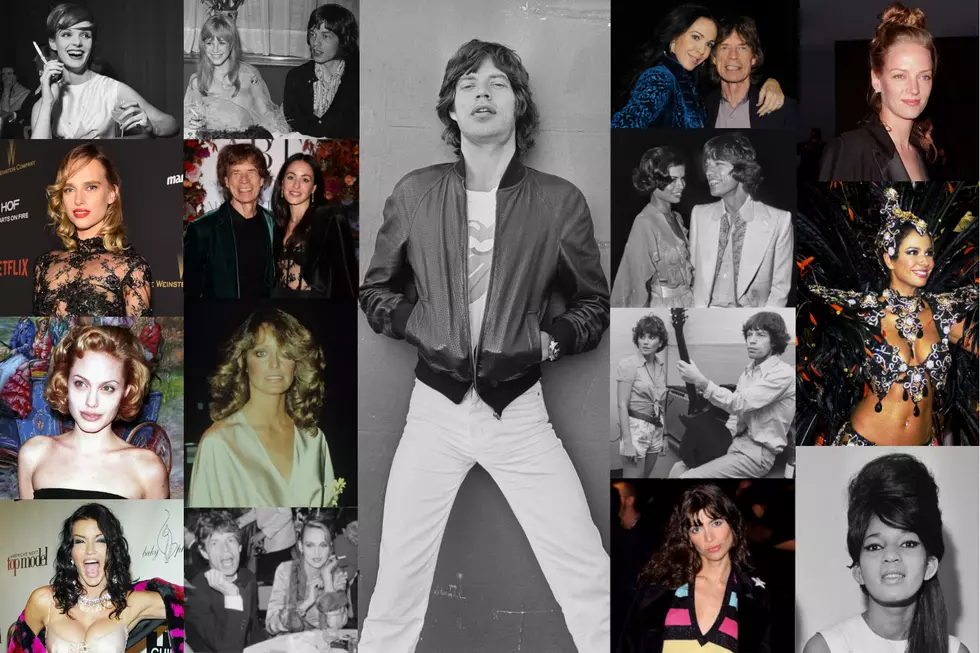
The Rolling Stones’ Tattoo You
In We’re No. 1 , A.V. Club music editor Steven Hyden examines an album that went to No. 1 on the Billboard charts to get to the heart of what it means to be “popular” in pop music, and how that concept has changed over the years. In this installment, he covers The Rolling Stones ’ Tattoo You, which went to No. 1 on Sept. 19, 1981, where it stayed for nine weeks.
A few months ago, I wrote a piece called “The Five-Albums Test” that some people loved, some people hated, and everybody seemed to disagree with—which was pretty much the response I was expecting. But there was one part of the essay that I was surprised nobody said anything about. It dealt with the concept of great “bad” records, and how it relates to albums released by the Rolling Stones in the ’70s.
Related Content
What’s a great “bad” record? It’s an album distinguished by “the degraded quality of the songwriting and musicianship and an overall feeling of boredom, detachment, or extremely undisciplined self-indulgence that’s palpable in the music” (that’s the “bad” part), and how this “actually makes the album more fascinating—so long as the artist in question is a genius—because it provides insight into what makes the artist’s ‘great’ records great, and demonstrates how functional he or she is even when operating on a lower level of artistry/sobriety.” (That’s the “great” part.)
After beginning the ’70s with probably their two best albums ever, Sticky Fingers and Exile On Main St. , the Stones retreated to Jamaica, started wearing mascara, and released 1973’s Goats Head Soup , a glammy, funky comedown record that radiates exhaustion and the kind of extreme, lobotomy-style intoxication experienced only by small-town, winter-bound depressives and rich, listless rock stars in exotic locales.
Goats Head Soup is the Stones’ first great “bad” record. (Honorable mention goes to 1967’s Their Satanic Majesties Request , which initially seems like a great “bad” record, but is actually just great.) A few albums later, the Stones’ released 1976’s Black And Blue , the band’s definitive great “bad” album. Recorded during auditions for outgoing guitarist Mick Taylor’s replacement, Black And Blue is essentially a collection of demos featuring Mick and Keef trying out potential Stones. The guy who got the job, Ron Wood, only appears on a few tracks, which explains why the songs on Black And Blue sound like either half-formed jams or very sleepy Jagger solo tracks. (The exception is “Hand Of Fate,” which is the great lost Stones rocker.) But even if the heavy-lidded ‘ludes-and blues ballad “Fool To Cry” is a chore to slog through, the “idea” of the Stones staggering through a MOR pop song during their most fucked-up period makes Black And Blue more fun to contemplate than most “good” records. On Goats Head Soup and Black And Blue , the music is merely what’s splayed over the really alluring stuff in the subtext.
Some might argue that 1981’s Tattoo You is another great “bad” Stones record, since the album was assembled from discarded tracks deemed unworthy of making some of the band’s sketchiest ’70s albums. A few songs, like the hit “Waiting On A Friend” and the smoky ballad “Tops,” dated back to Goats Head Soup , and featured Taylor’s old guitar parts. Other tracks derived from sessions recorded in Paris that formed the basis of 1978’s wonderful Some Girls and 1980’s wondrously skeezy Emotional Rescue.
As Jagger related in a 1995 interview with Rolling Stone , Tattoo You was hastily assembled in order for the Stones’ to have product to hawk on its upcoming monster tour of American arenas and stadiums in the fall and early winter of 1981. Jagger and producer Chris Kimsey combed through suitable outtakes—most of which didn’t have lyrics or even melodies—without much input from the rest of the band. “They were just bits, or they were from early takes,” Jagger said. “And then I put them all together in an incredibly cheap fashion. I recorded in this place in Paris in the middle of winter. And then I recorded some of it in a broom cupboard, literally, where we did the vocals.”
This “cheap” album of “bits” went on to become one of the most successful Rolling Stones records ever, selling 4 million copies and topping the Billboard albums chart for nine weeks, going to No. 1 right before the tour launched and staying there for much of its duration. (To date, it’s the last Stones album to go to No. 1.) Tattoo You also spawned the last big Rolling Stones single, “Start Me Up,” which was released right before the album and peaked at No. 2 for three weeks that October, eventually staying on the charts for nearly six months. A straight-ahead rocker with a catchy start-stop beat that’s been firmly entrenched as a sports-event soundtrack fixture for the past three decades, “Start Me Up” had floated around for years as a reggae track that the Stones could never get the hang of. The one rock-oriented take of “Start Me Up” is what ended up on Tattoo You.
rolling stones - start me up by aquarius3
When Rolling Stone asked Jagger for his opinion of Tattoo You , he gave an interesting answer. “I think it’s excellent,” he said. “But all the things I usually like, it doesn’t have. It doesn’t have any unity or purpose or place or time.” An excellent record that lacks the qualities normally associated with excellence—sounds like a “great” bad record to me.
Except I don’t think Tattoo You qualifies. Along with Some Girls , it’s the last gasp of the Stones’ creative prime. And I actually disagree with Jagger’s criticism of the record. Tattoo You might have been culled as a kind of shadow greatest hits from the previous 10 years of the band’s career, but it hangs together as a reflection of where the Stones were at during a crucial moment in their history, and where they could have gone.
The two sides of Tattoo You can be described simply and fairly accurately as “rock” and “ballads,” but I see the album as more like a fork in the road. Side One is all business: It starts off with “Start Me Up,” which seemed pre-ordained to become an arena-rock staple, and blows through six blustery, fast (except for the porn-ready instrumental “Slave”), and mostly stupid songs in about 20 minutes. This was the sound of the stadium-sized Stones of the ’81 tour, which launched in Philadelphia and spent 10 weeks hitting some of the nation’s largest domes and hockey sheds.
As seen in Hal Ashby’s nearly unwatchable 1982 concert film Let’s Spend The Night Together , the Stones blew through songs on the ’81 tour with the speed and subtly of elephants stomping through an aerobics class. It’s a treatment that suits energetic Tattoo You tracks like “Hang Fire” and “Neighbours,” which unfold staccato-style like late-night, coke-fueled conversations that make up for their vapid content by not dwelling on it too long. The rush of the songs is thrilling, but also alienating, similar to how Ashby frames the Stones in Together to emphasize the vast spaces of their enormous stage and the band members’ distance from the audience.
Side Two of Tattoo You , on the other hand, is the last truly outstanding music of the Stones’ recording career, and certainly the most “mature” they ever dared to sound. If Side One is about whipping up pumped-up flash for the joint-smoking burnouts in the cheap seats, Side Two feels more personal and grown-up, the sound of guys who have been around the block dozens of times starting to come to terms with the wreckage they’ve created by so much rapid movement.
Songs like “Worried About You” and “Tops” dig deep into regret and self-recrimination, slinking about on chicken-scratch guitars before ripping your heart out with a soulfully shouted Keith Richards’ backing vocal. “Sometimes I stay up late, having fun,” Jagger sings in his “Miss You”/”Emotional Rescue” falsetto on “Worried About You,” slipping elegantly into the capper: “I guess you know by now, that you ain’t the only one.” Jagger playing the catting-around lothario is nothing new, nor is the strain of self-pity of “Worried About You” that undercuts his macho posturing. But “Worried About You” isn’t a kiss-off to uppity, controlling women like so many Stones songs; Jagger is giving himself the kiss-off here.
He does the same on “Tops,” where Jagger mocks the aging show-biz sleazeball who uses his power and celebrity to seduce young women with promises of fame and fortune. He goes back to the falsetto by the song’s end, singing “I’ll take you to the top” over and over, letting the hollowness of his promises echo as the song fades.
The best song on Tattoo You is the album’s final cut, “Waiting On A Friend,” which Jagger wrote new lyrics for after discovering the old, unfinished track from nearly a decade earlier. Jagger has said that the lyrics are “very gentle and loving, about friendships in the band,” but who are we kidding here: By 1981, the Rolling Stones weren’t friends, which at least partly explains why Jagger recorded the vocals for “Waiting On A Friend” by himself in a Parisian cupboard. “Waiting On A Friend” is really a song about a guy who has finally come to see a woman as his equal. “I’m not waiting on a lady, I’m just waiting on a friend”—because, for the first time, they’re one in the same.
That’s how I interpret “Waiting On A Friend”—it’s Mick Jagger’s declaration of independence from his old rock-star bullshit. “Don’t need a whore, I don’t need no booze, don’t need a virgin priest / But I need someone I can cry to, I need someone to protect,” Jagger sings, forsaking sex (whore) and drugs (booze) in favor of an adult partnership. (He’s also given up rock ’n’ roll for a light, sensuous Latin rhythm.) At the end of “Waiting On A Friend,” right before the second breathtaking Sonny Rollins sax solo, Jagger sings: “Making love and breaking hearts, it’s a game for youth.” Side One of Tattoo You is the Stones rapidly huffing and puffing in a desperate attempt to be young , a charade that would stifle the Stones for the next 30 years. But on “Waiting On A Friend,” Jagger lays this out for what it is—a game he’s outgrown.
If only the game weren’t so profitable. The Stones ended playing for 2 million people on the ’81 tour, performing 50 shows in 29 cities and grossing $50 million, which at the time made it the most successful rock tour ever. Tickets were priced at around $15, and went for as much as $250 on the scalper market. For the band’s New York shows, 3.5 million people sent in requests for 150,000 tickets. Subsequent Rolling Stones tours would prove to be even bigger moneymakers: Until recently, when it was surpassed by U2’s “360” tour, the Stones’ “Bigger Bang” tour was the highest grossing in history, raking in nearly $560 million.
After Tattoo You, the Stones made one of their strangest and daring records, 1983’s Undercover , and their least notable and loved work, 1986’s Dirty Work. After that, Stones records picked up where Side One of Tattoo You left off, acting as lead-ins for the highly profitable tours that justified the Stones’ continued existence more than any apparent artistic spark.
What makes the less-inspired Stones records of the ’70s great is their honesty; right or wrong, they show a band living with their self-imposed failings. Sometimes they fight through them, other times they sail through like dead-eyed sharks—but they’re always moving. That’s why I love them. While I’m enough of a Stones apologist to muster up a defense of latter-day efforts Steel Wheels, Voodoo Lounge, and A Bigger Bang , there is a phoniness to those records that can’t be denied. They’re all about proving that the Stones (and Mick specifically) “still have it.” The Stones remain a very capable of live unit, but their post- Tattoo You albums consciously tried to re-create past glories that seem to have very little to do with their present lives as millionaire British geriatrics.
Sometimes I wonder about the other Rolling Stones, the one that exists in my imagination, the one that took the other path in the fork in the road. What if the Stones had made records that dealt candidly with growing old in rock ’n’ roll and apart from your former friends in the band? Would that have been preferable? Would the Stones still even be a band? My feeling is probably not. Because the Stones are still here, I’m still hoping that they’ll make a record like that some day. Even if it ends up being only great in a “bad” way, that’s preferable to cold competence any day.
Up next: The Doors' Waiting For The Sun
- Statistics Stats
- You are here:
- Rolling Stones, The
- Tour Statistics
- Song Statistics Stats
- Tour Statistics Stats
- Other Statistics
All Setlists
- All setlist songs ( 2113 )
Years on tour
- 2023 ( 1 )
- 2022 ( 14 )
- 2021 ( 16 )
- 2019 ( 17 )
- 2018 ( 14 )
- 2017 ( 14 )
- 2016 ( 19 )
- 2015 ( 17 )
- 2014 ( 30 )
- 2013 ( 22 )
- 2012 ( 9 )
- 2007 ( 31 )
- 2006 ( 73 )
- 2005 ( 45 )
- 2003 ( 81 )
- 2002 ( 36 )
- 1999 ( 46 )
- 1998 ( 71 )
- 1997 ( 37 )
- 1995 ( 74 )
- 1994 ( 62 )
- 1990 ( 55 )
- 1989 ( 61 )
- 1986 ( 1 )
- 1982 ( 36 )
- 1981 ( 51 )
- 1979 ( 2 )
- 1978 ( 26 )
- 1977 ( 2 )
- 1976 ( 42 )
- 1975 ( 47 )
- 1973 ( 54 )
- 1972 ( 51 )
- 1971 ( 18 )
- 1970 ( 24 )
- 1969 ( 32 )
- 1968 ( 3 )
- 1967 ( 30 )
- 1966 ( 90 )
- 1965 ( 237 )
- 1964 ( 262 )
- 1963 ( 224 )
- 1962 ( 36 )
Show all tours
- 14 on Fire ( 29 )
- 1973 European Tour ( 41 )
- 50 & Counting ( 27 )
- A Bigger Bang ( 145 )
- Aftermath ( 57 )
- American Tour 1972 ( 51 )
- América Latina Olé ( 14 )
- Australasian Tour 1965 ( 31 )
- Australasian Tour 1966 ( 18 )
- Between the Buttons ( 28 )
- Bridges to Babylon ( 118 )
- British Tour 1963 ( 138 )
- European Tour 1965 ( 101 )
- European Tour 1966 ( 13 )
- European Tour 1970 ( 24 )
- First US Tour 1964 ( 11 )
- Hackney Diamonds ( 1 )
- In the Desert ( 4 )
- Let It Bleed ( 28 )
- Licks World Tour ( 116 )
- No Filter ( 59 )
- No Security ( 35 )
- North American Tour 1965 ( 25 )
- Out of Our Heads ( 43 )
- Pacific Tour 1973 ( 13 )
- Sixty ( 14 )
- Some Girls ( 25 )
- Steel Wheels ( 74 )
- Tattoo You ( 86 )
- Tour of Europe '76 ( 41 )
- Tour of the Americas '75 ( 46 )
- U.K. Tour 1964 ( 227 )
- U.S. Tour (2nd Leg) 1964 ( 15 )
- UK Tour 1971 ( 18 )
- Urban Jungle ( 41 )
- Voodoo Lounge ( 135 )
- Winter/Spring 1965 British Tour ( 27 )
- Zip Code ( 15 )
- Avg Setlist
- Concert Map
Average setlist for tour: Tattoo You
- Under My Thumb Play Video
- When the Whip Comes Down Play Video
- Let's Spend the Night Together Play Video
- Shattered Play Video
- Neighbours Play Video
- Black Limousine Play Video
- Just My Imagination (Running Away With Me) ( The Temptations cover) Play Video
- Twenty Flight Rock ( Eddie Cochran cover) Play Video
- Going to a Go-Go ( The Miracles cover) Play Video
- Let Me Go Play Video
- Time Is on My Side ( Kai Winding & His Orchestra cover) Play Video
- Beast of Burden Play Video
- Waiting on a Friend Play Video
- Let It Bleed Play Video
- You Can't Always Get What You Want Play Video
- Little T&A Play Video
- Tumbling Dice Play Video
- She's So Cold Play Video
- Hang Fire Play Video
- Miss You Play Video
- Honky Tonk Women Play Video
- Start Me Up Play Video
- Brown Sugar Play Video
- Jumpin' Jack Flash Play Video
- (I Can't Get No) Satisfaction Play Video
Show Openers
Main set closers, show closers, encores played.
This feature is not that experimental anymore. Nevertheless, please give feedback if the results don't make any sense to you.
- Apr 22, 2024
- Apr 21, 2024
- Apr 20, 2024
- Apr 19, 2024
- Apr 18, 2024
- Apr 17, 2024
- FAQ | Help | About
- Terms of Service
- Ad Choices | Privacy Policy
- Feature requests
- Songtexte.com
Search for products on our site
- Best Sellers
- Last Chance
- BAGS & CARRYALLS
- LITHOGRAPHS
- HOLIDAY & ORNAMENTS
- CUSTOMIZABLE
- BLU-RAY / DVD
- Stones x Admiral
- Hackney Diamonds
- Live at Wiltern
- Parking Lot Tees
- Paint It Black
- Stones x Oxford Pennant
- Stones x Royal Mint
- Stones X Slowtide
- The Marquee Club
- Goats Head Soup
- Tattoo You 40th Anniversary
- Forty Licks
- Diamondbacks
- The Licks Club
- Create account
Celebrate 40 years of Tattoo You
August 20, 2021

- Tags: no filter
← Older Post Newer Post →
- Today's news
- Reviews and deals
- Climate change
- 2024 election
- Fall allergies
- Health news
- Mental health
- Sexual health
- Family health
- So mini ways
- Unapologetically
- Buying guides
Entertainment
- How to Watch
- My watchlist
- Stock market
- Biden economy
- Personal finance
- Stocks: most active
- Stocks: gainers
- Stocks: losers
- Trending tickers
- World indices
- US Treasury bonds
- Top mutual funds
- Highest open interest
- Highest implied volatility
- Currency converter
- Basic materials
- Communication services
- Consumer cyclical
- Consumer defensive
- Financial services
- Industrials
- Real estate
- Mutual funds
- Credit cards
- Credit card rates
- Balance transfer credit cards
- Business credit cards
- Cash back credit cards
- Rewards credit cards
- Travel credit cards
- Checking accounts
- Online checking accounts
- High-yield savings accounts
- Money market accounts
- Personal loans
- Student loans
- Car insurance
- Home buying
- Options pit
- Investment ideas
- Research reports
- Fantasy football
- Pro Pick 'Em
- College Pick 'Em
- Fantasy baseball
- Fantasy hockey
- Fantasy basketball
- Download the app
- Daily fantasy
- Scores and schedules
- GameChannel
- World Baseball Classic
- Premier League
- CONCACAF League
- Champions League
- Motorsports
- Horse racing
- Newsletters
New on Yahoo
- Privacy Dashboard
The Rolling Stones’ Last Great Album, ‘Tattoo You,’ Adds Bonus Tracks and Full Concert in 40th Anniversary Edition: Album Review
After decades of not really dealing with their catalog, the Rolling Stones have been digging deep into their vaults for the past dozen years or so, releasing expanded versions of past albums, many full-length archival concerts, and finishing up old songs that they’d started recording decades earlier.
The latest in this series, released just a few weeks after the 40th anniversary of its original release (vinyl pressing plants are really backed up these days), finds the Stones rolling out a deluxe boxed set of the album that many agree was their last great studio effort, “Tattoo You,” which actually was less a new album than an odds-and-ends collection of songs from the preceding decade that they’d finished up, dating back as far as the “Goats Head Soup” sessions nine years earlier. Regardless, it’s one of the strongest albums from the Stones’ second decade, smartly splitting the sides — an important distinction in the vinyl era — into rockers on side 1 and the softer songs on side 2. For the super-deluxe edition, the group has tacked on nine bonus studio cuts as well as an entire 1982 concert.
More from Variety
Beatles vs. the Rolling Stones: A History of Their Legendary Rivalry
Rolling Stones Gather a New Drummer, and a Renewed Lust for Live, at L.A.'s SoFi Stadium: Concert Review
Mick Jagger Gets Snarky About Paul McCartney's 'Blues Cover Band' Dig at Rolling Stones' L.A. Show
The “Tattoo You” album proper not only gave the group a pair of big hit singles and videos to feed the then-brand-new MTV — the all-time classic “Start Me Up” and the ballad “Waiting on a Friend” — but a strong platform to present their biggest tour in several years, which rampaged across North American arenas for the entire fall of 1981 and Europe the following summer. There was no reinventing the wheel here — no controversial, disco-tinged songs like “Miss You” or “Emotional Rescue” or country tracks (serious or tongue in cheek), just a bevy of straight-up rockers like “Hang Fire,” “Neighbors,” “Black Limousine” on the first side and softer, hazier tracks like “Worried About You” and “Tops” on the flip. The arrival of guitarist Ron Wood as a full time member had completely rejuvenated the band after several years of dissolution and, beginning with 1978’s galvanizing “Some Girls” album, helped them lock in the hard-riffing template for most of what they’ve done since, and that formula was solidified with “Tattoo You.”
So that’s the 40-year-old part of this collection — what about the “new” stuff? The outtakes that the Stones have appended to past deluxe editions have largely been decades-old instrumentals or sketches that were gussied up with new lead vocals and overdubs, to varying degrees of success; the bonus cuts on “Exile on Main Street” and “Some Girls” feel kind of embalmed. While that happily is not the case here — all nine tracks are lively performances — they’re also not A-list songs. There are three covers — Dobie Gray’s soul ballad “Drift Away,” the Chi-Lites’ “Troubles a’ Comin’,” and a hot version of blues legend Jimmy Reed’s “Shame Shame Shame” — four originals that are energetic but a bit dashed off, and a reggae-tinged version of “Start Me Up” that is interesting but much less compelling than the familiar version (apparently, the group kept passing over the several-year-old song because this version was first on the tape and the rocking one was at the end).
That leaves the concert, which captures a June 1982 London stadium date from the second leg of the tour. It’s almost exactly the same career-spanning set featured in the “Let’s Spend the Night Together” concert film and the “Still Life” album recorded the previous autumn, including three relatively rare covers, “Going to a Go-Go,” “Twenty Flight Rock” and “Chantilly Lace.” There’s not much we haven’t heard before, but with this multi-month jaunt the Stones basically wrote the book for all the arena/stadium tours that followed, and it’s great to hear the group at this particular peak of their live powers — they would not tour again until the end of the decade. By the time they returned in 1989, the Stones were all well into their forties (or, in former bassist Bill Wyman’s case, his fifties), and were also well on their way to proving that a great rock band can put on monumentally entertaining and musically satisfying concerts well into their seventies and possibly beyond.
How much longer the Stones will continue without Charlie Watts, one of the greatest drummers in rock history and the backbone of the band, remains to be seen. But this album, and this concert document, cap their second decade — the period that set the template for everything that followed over the next three.
Courtesy UMe
Best of Variety
The Best Albums of the Decade
Sign up for Variety’s Newsletter . For the latest news, follow us on Facebook , Twitter , and Instagram .
Recommended Stories
Based on the odds, here's what the top 10 picks of the nfl draft will be.
What would a mock draft look like using just betting odds?
Broncos, Jets, Lions and Texans have new uniforms. Let's rank them
Which new uniforms are winners this season?
Jamie Dimon is worried the US economy is headed back to the 1970s
JPMorgan's CEO is concerned the US economy could be in for a repeat of the stagflation that hampered the country during the 1970s.
WNBA Draft winners and losers: As you may have guessed, the Fever did pretty well. The Liberty? Perhaps not
Here are five franchises who stood out, for better or for worse.
Everyone's still talking about the 'SNL' Beavis and Butt-Head sketch. Cast members and experts explain why it's an instant classic.
Ryan Gosling, who starred in the skit, couldn't keep a straight face — and neither could some of the "Saturday Night Live" cast.
Dave McCarty, player on 2004 Red Sox championship team, dies 1 week after team's reunion
The Red Sox were already mourning the loss of Tim Wakefield from that 2004 team.
Ryan Garcia drops Devin Haney 3 times en route to stunning upset
The 25-year-old labeled "mentally fragile" by many delivered the upset for the ages.
Yankees' Nestor Cortés told by MLB his pump-fake pitch is illegal
Cortés' attempt didn't fool Andrés Giménez, who fouled off the pitch.
Here’s when people think old age begins — and why experts think it’s starting later
People's definition of "old age" is older than it used to be, new research suggests.
Jets trade QB Zach Wilson to Broncos
Wilson's starting over in Denver.
Holding the Music in Your Hands ®
Thanks for being a part of the SDE community.
Remember Me
Forgot password?
Don't have an account? Sign up!
The Rolling Stones / Tattoo You 40th anniversary reissue
1981 album revisited and expanded.
By Paul Sinclair
Ratings Ratings
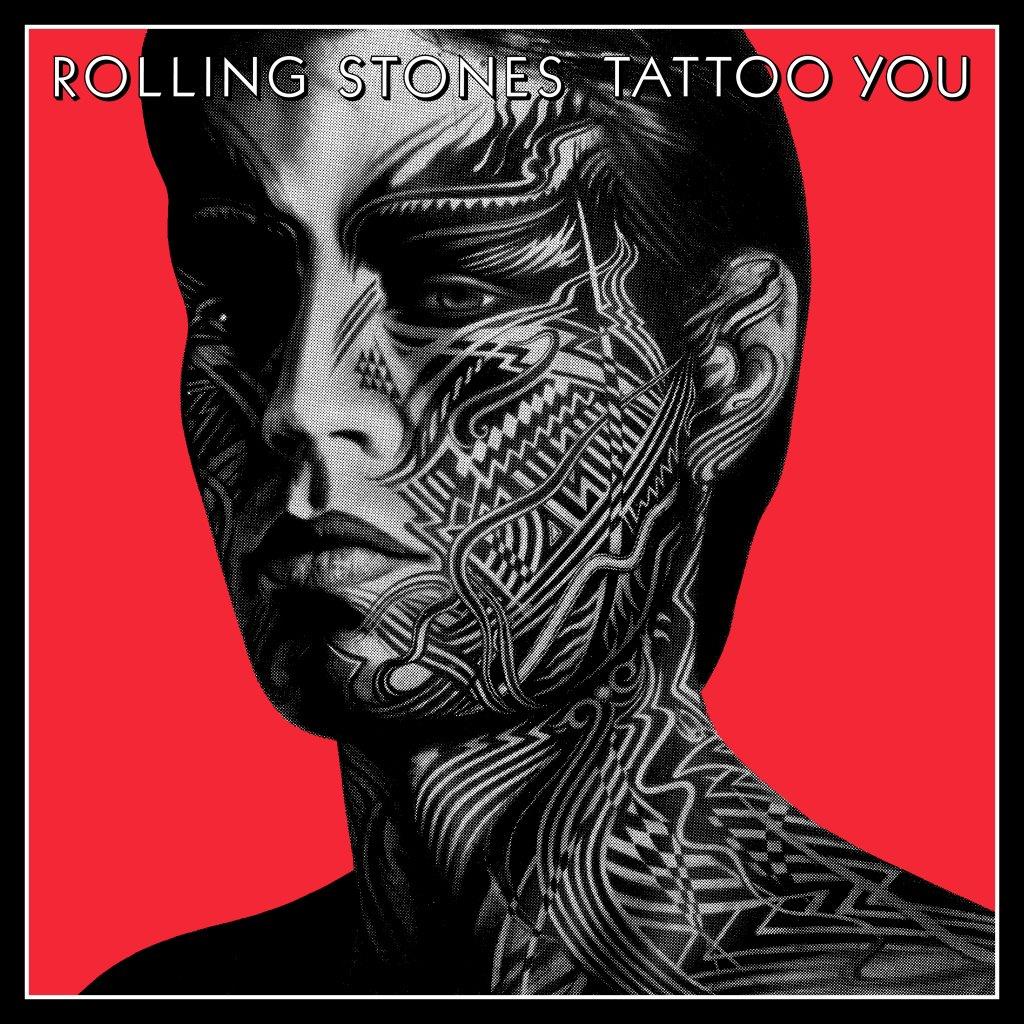
Tattoo You / The Rolling Stones 4CD+LP super deluxe
SDE Reader Rating
26 Reader Submissions -->
The Rolling Stones ‘ 1981 album Tattoo You will be reissued in October across six physical formats including a five-disc super deluxe edition.
The original album was put together mostly from studio outtakes from the 1970s and features well known singles such as Waiting On A Friend and the transatlantic top ten hit Start Me Up.
The album has been remastered (by Stephen Marcussen) and selected formats offer Lost & Found: Rarities a nine-track collection of previously unreleased songs from the period of the album’s original release, newly completed with additional vocals and guitar by the band. One of these tracks is called ‘Living In The Heart Of Love’ which you can listen to below.
This bonus disc of rarites comes with the two-CD deluxe , and the 4CD+vinyl LP super deluxe edition. The latter also includes two additional CDs of live performance with Still Life – Wembley Stadium 1982 , a memento of the band’s London show in June that year from the Tattoo You tour. The vinyl record in the super deluxe is a picture disc.
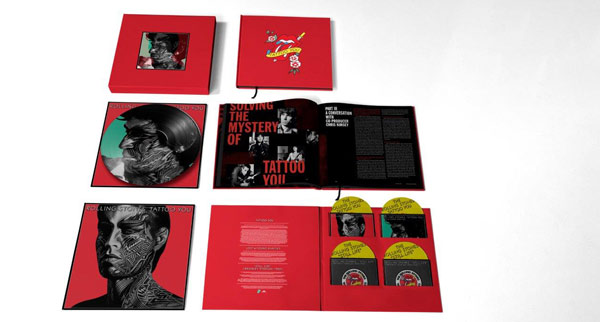
The box set features a special lenticular sleeve and comes with a 124-page book featuring over 200 rare photos from the recording sessions and world tour and includes interviews with producer Chris Kimsey & photographer Hubert Kretzscmar.
There are no less than three vinyl versions of the Tattoo You reissue: A single LP vinyl remaster, a 2LP vinyl deluxe with the nine bonus tracks and a 5LP vinyl box set which includes the album, bonus tracks and the Wembley gig. Note: the vinyl box also includes the 124-page book and lenticular artwork, just like the CD super deluxe!
Tattoo You will be reissued on 22 October 2021.
Compare prices and pre-order

The Rolling Stones
Tattoo you - 4cd+vinyl picture disc super deluxe.

Tattoo You - 5LP vinyl box set

Tattoo You - 2CD deluxe with 9 bonus tracks


Tattoo You - 2LP deluxe vinyl with 9 bonus tracks

Tattoo You - single vinyl remaster

Artist to Rolling Stones
Tattoo you - single cd edition, tracklisting.
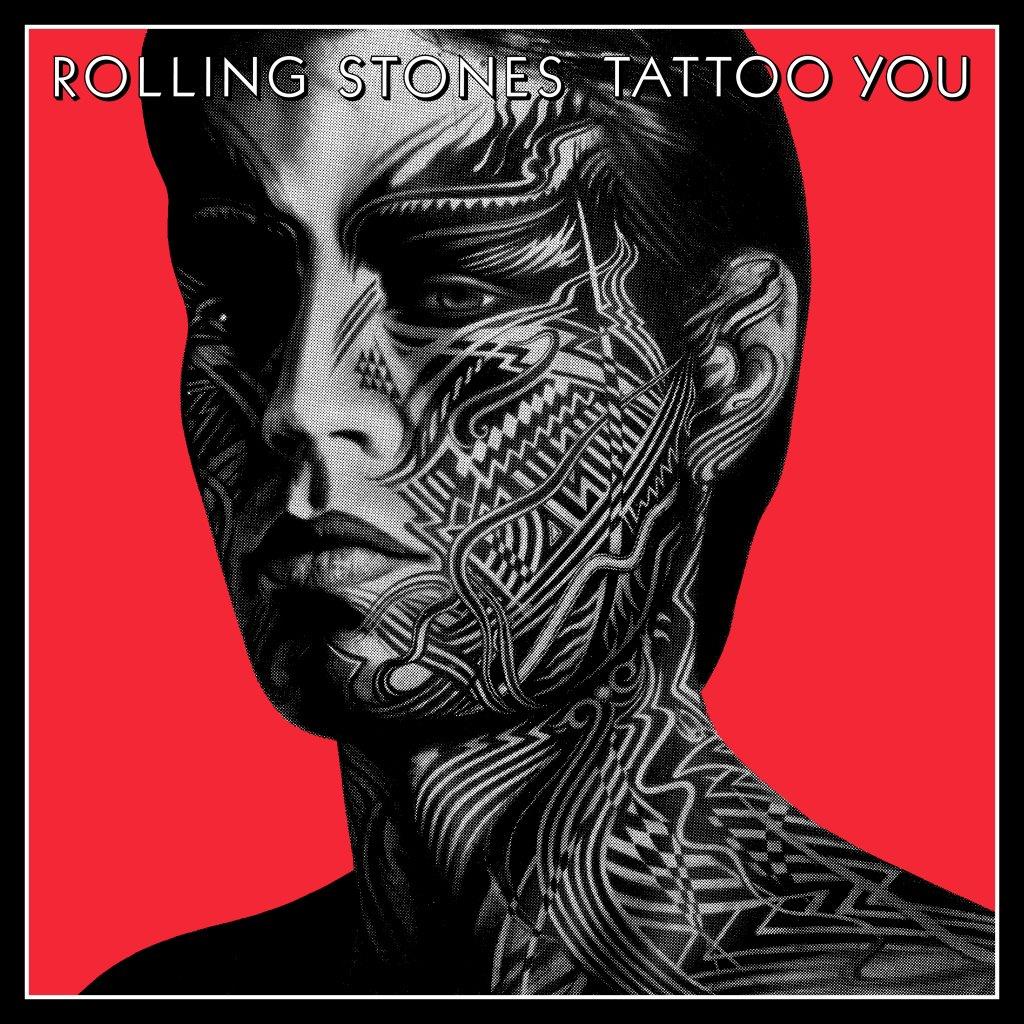
Tattoo You The Rolling Stones / 4CD+LP super deluxe edition
- Start Me Up – Remastered 2021
- Hang Fire – Remastered 2021
- Slave – Remastered 2021
- Little T&A – Remastered 2021
- Black Limousine – Remastered 2021
- Neighbours – Remastered 2021
- Worried About You – Remastered 2021
- Tops – Remastered 2021
- Heaven – Remastered 2021
- No Use In Crying – Remastered 2021
- Waiting On A Friend – Remastered 2021
- Living In The Heart Of Love
- Troubles A’ Comin
- Shame Shame Shame
- Come To The Ball
- Fast Talking Slow Walking
- Start Me Up (Early Version)
- Under My Thumb
- When The Whip Comes Down
- Let’s Spend The Night Together
- Black Limousine
- Just My Imagination (Running Away With Me)
- Twenty Flight Rock
- Going To A Go Go
- Chantilly Lace
- Time Is On My Side
- Beast Of Burden
- Let It Bleed
- You Can’t Always Get What You Want
- Band Introductions
- Little T&A
- Tumbling Dice
- She’s So Cold
- Honky Tonk Women
- Brown Sugar
- Start Me Up
- Jumpin’ Jack Flash
- (I Can’t Get No) Satisfaction
Sign Up For the SDE newsletter
SuperDeluxeEdition.com helps fans around the world discover physical music and discuss releases. To keep the site free, SDE participates in various affiliate programs, including Amazon and earns from qualifying purchases.
Related Content
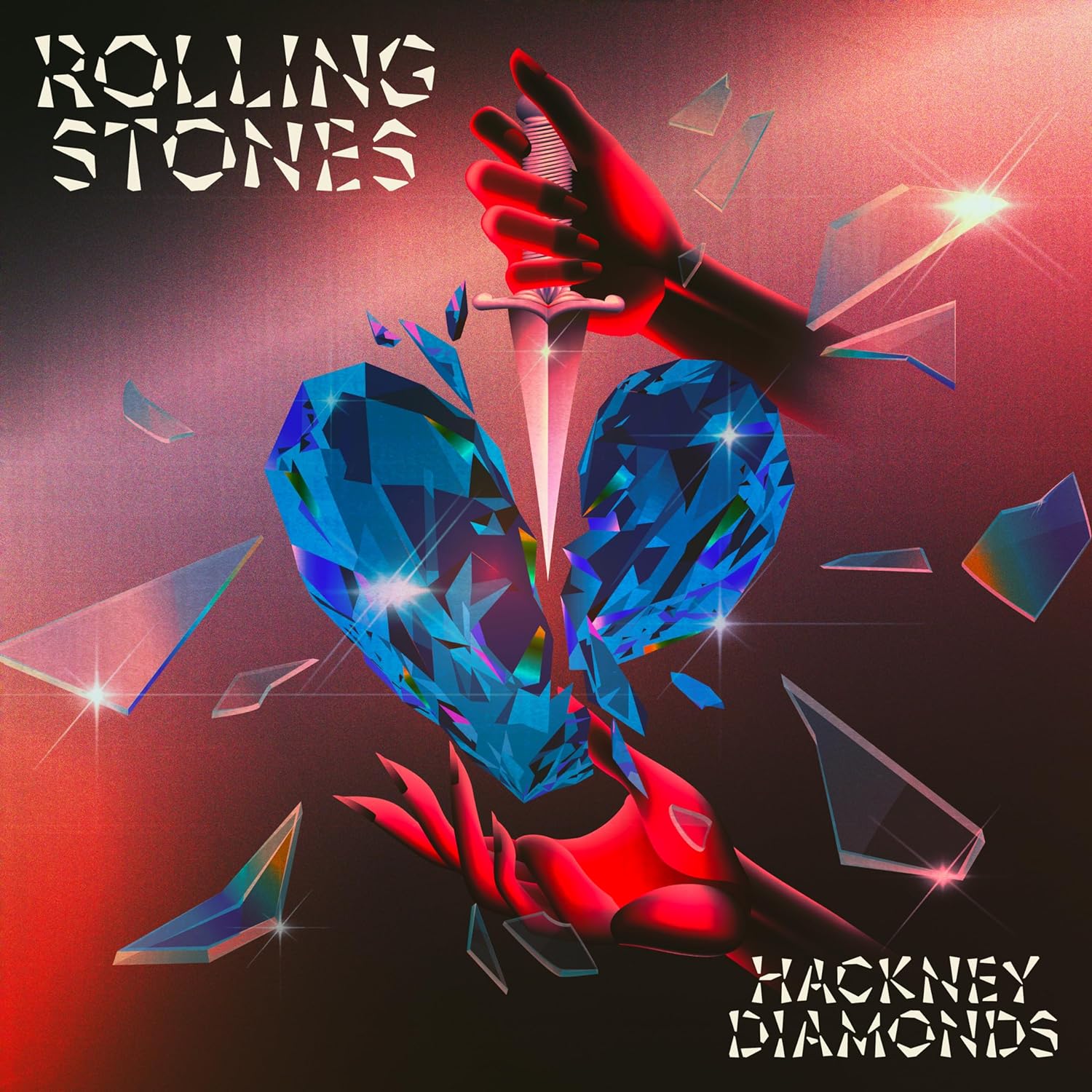
30 Nov 2023
New 2CD set of The Rolling Stones Hackney Diamonds
The ‘brass neck’ edition?
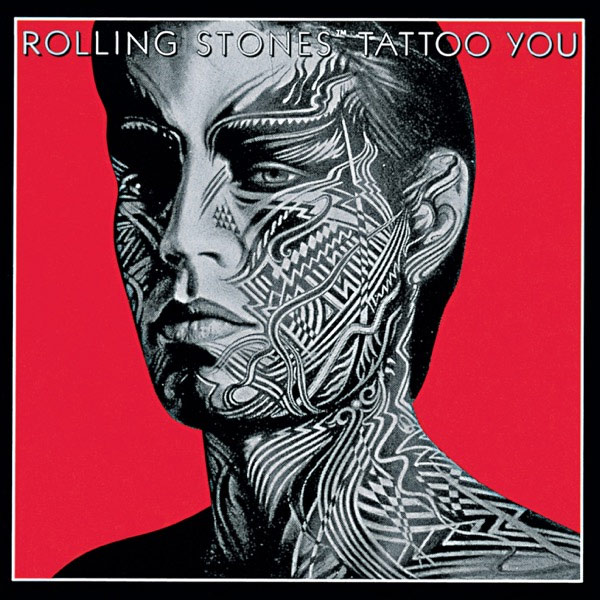
19 Jul 2021
Ronnie Wood confirms Tattoo You anniversary reissue
1981 Stones album next in line for the box set treatment
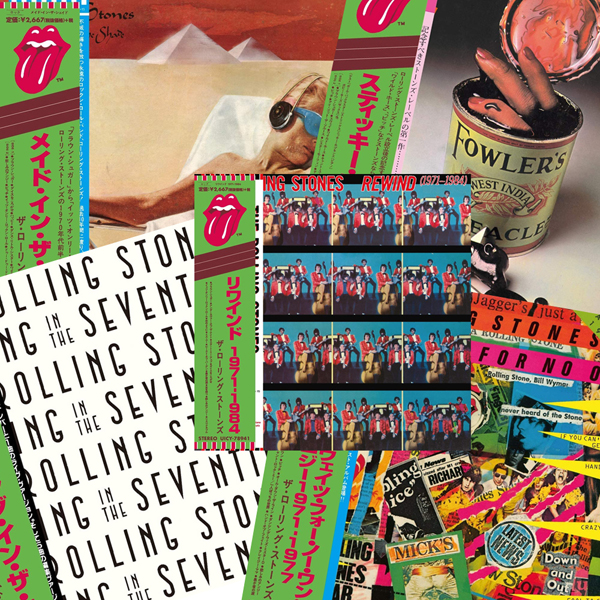
30 Nov 2020
The Rolling Stones / Japanese ‘paper sleeve’ CDs available at a great price
High quality Japanese mini-LP CDs at bargain prices
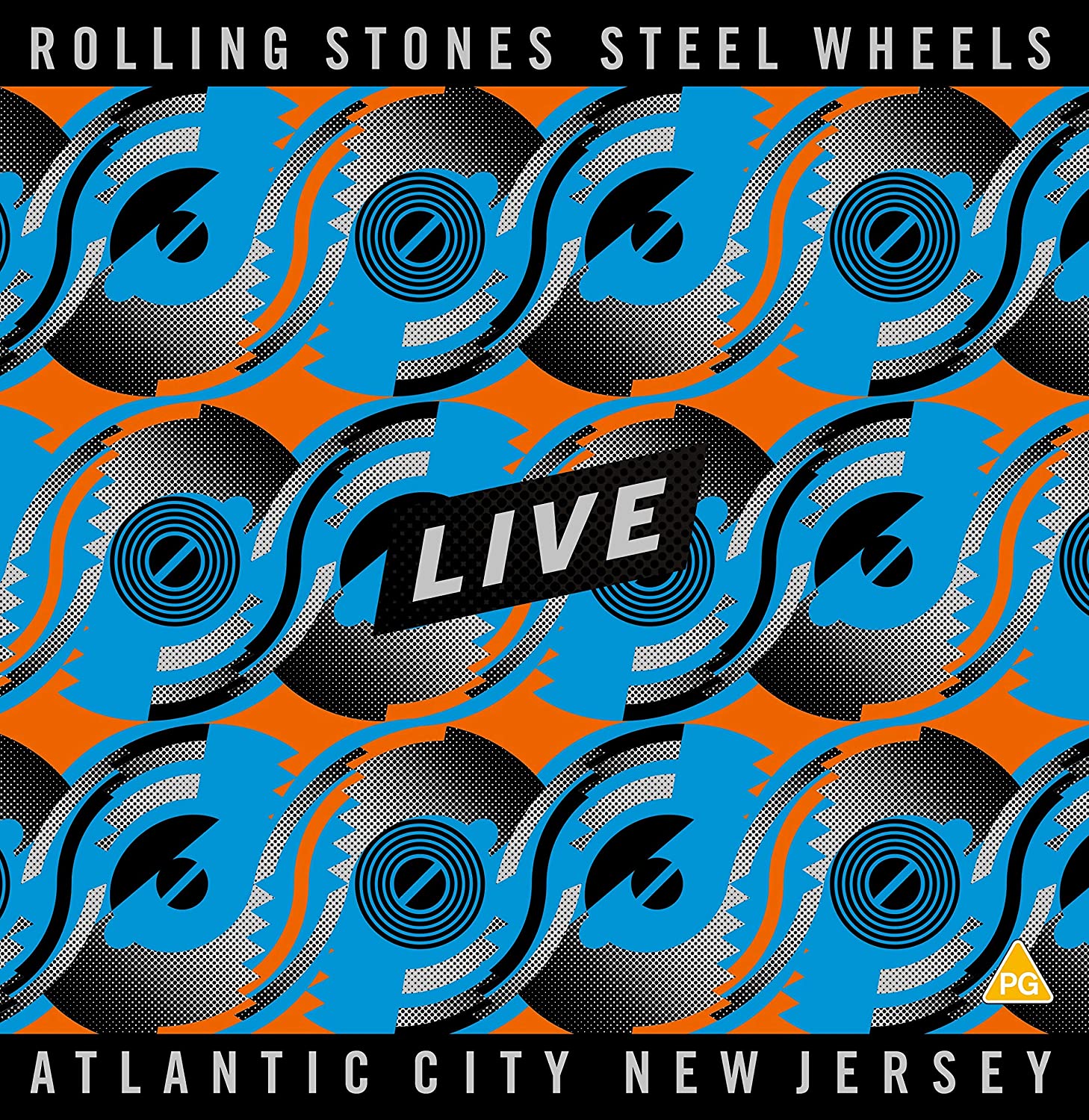
05 Aug 2020
The Rolling Stones / Steel Wheels Live
Unreleased 1989 concert film issued on audio and video formats The Rolling Stones will issue…
125 Comments
Sign up for the sde newsletter.

Mick Jagger, 80, and the Rolling Stones Are About to Start Their North American Tour
1943-present
Mick Jagger News: Rolling Stones Kicking Off Hackney Diamonds Tour
Mick Jagger and the Rolling Stones are hitting the road again, this time in support of their 2023 studio album Hackney Diamonds . The 80-year-old Jagger, Keith Richards, and Ronnie Wood begin their Stones Tour ‘24 across North America on April 28 in Houston. The iconic rock group will play 19 shows in total through mid-July, making stops at stadiums in Philadelphia, Atlanta, and Los Angeles, and other major cities.
Jagger posted an Instagram video in March showing his tour prep, with the frontman rocking out on an electric guitar. “Looking forward to seeing you all when the tour starts next month!” he wrote in the caption. The 2024 tour marks the band’s first concert series in two years.
Save your seat to see the Stones on StubHub or Ticketmaster .
[table-of-contents] stripped
Who Is Mick Jagger?
Mick Jagger is the lead singer of the Rolling Stones and has delighted fans for more than six decades with his exuberant stage presence. Jagger formed his first band as a teenager in southeast England and eventually left the London School of Economics to start a rock band with childhood friend Keith Richards. Rebellious and rough, the Rolling Stones released their debut album in 1964 and ascended to the top of the music world with major hits like “(I Can’t Get No) Satisfaction,” “Jumpin’ Jack Flash,” and “Honky Tonk Women.” To date, the band has won three Grammy Awards and released more than 19 platinum or multiplatinum albums. Separately, Jagger attempted a solo music career but was nowhere near as successful. Known for his sex appeal, the singer has been married twice and is a father to eight kids.
Quick Facts
FULL NAME: Michael Philip Jagger
BORN: July 26, 1943
BIRTHPLACE: Dartford, England
SPOUSES: Bianca Jagger (1971-1978) and Jerry Hall (1990-1999)
CHILDREN: Karis, Jade, Elizabeth, Georgia, James, Gabriel, Lucas, and Deveraux
ASTROLOGICAL SIGN: Leo
Young Mick Jagger
Mick Jagger was born Michael Phillip Jagger on July 26, 1943, in Dartford, England, outside of London.
The oldest son of a teacher and a homemaker, Jagger was a good student and popular among his classmates. He developed an interest in American blues and R&B music at an early age and got his first guitar at age 14. As a teenager, Jagger started collecting blues records from the likes of Muddy Waters and Howlin’ Wolf. He and his friend Dick Taylor soon started a band together called Little Boy Blue and the Blue Boys with Jagger as its singer.
In 1960, Jagger was accepted to the London School of Economics. He lived at home and commuted into the city to attend classes. Also working on his band, Jagger soon added a new member, guitarist Keith Richards. The two had known each other growing up in Dartford.
Exploring London’s emerging blues scene together, Jagger and Richards spent some time at the Ealing Club. There they saw Alexis Korner’s Blues Incorporated play and were wowed by guitarist Brian Jones, who made guest appearances with the group. After a while, Jagger also appeared as a guest vocalist with Blues Incorporated.
Forming the Rolling Stones
Jagger, Keith Richards, and Dick Taylor soon joined up with Brian Jones, who wanted to start his own group. Pianist Ian Stewart was also an early member of what would become the Rolling Stones. By 1963, Charlie Watts had joined the band as its drummer and Taylor departed, replaced by bassist Bill Wyman. Stewart stayed on to serve as road manager, though he continued playing and recording with the band.
Under the direction of their manager Andrew Loog Oldham, the Rolling Stones were marketed as a group of wild and rough rockers. The group’s style helped them land a deal with Decca Records. Jagger, then 20 years old, was a key ingredient in the band’s growing success, attracting audiences with his stage antics and sex appeal.
Intitially, the group mostly recorded cover versions of other people’s songs. The Stones first made the British charts in 1963 with a cover version of Chuck Berry ’s “Come On” before scoring their first No. 1 songs the next year with covers of “It’s All Over Now,” originally by Bobby Womack, and “Little Red Rooster,” first recorded by Howlin’ Wolf. But Richards and Jagger soon emerged as a powerful songwriting team—occasionally using the pseudonym “Nanker Phelge” for some of their early work.
Hit Songs and Albums
In 1964, the Rolling Stones released their self-titled debut album, which topped the British albums chart, and toured the United States. Things really took off starting the next year as the band scored No. 1 songs and albums on both sides of the Atlantic. “(I Can’t Get No) Satisfaction,” “Get Off Of My Cloud,” and the 1965 album Out of Our Heads were bonafide hits in the United Kingdom and the United States. Additionally, British fans turned “The Last Time” and Rolling Stones No. 2 (1965) into chart-topping successes.
More hits soon followed, including the No. 1 song “Paint It, Black” and the 1966 album Aftermath . The 1968 single “Jumpin’ Jack Flash” hit the No. 1 spot on the U.K. chart, reached the top 5 in the United States, and marked the straightforward rock style that became synonymous with the Rolling Stones. The banded rounded out the decade with one more No. 1 song, “Honky Tonk Women,” and another chart-topping album in Let It Bleed (1969).
In all, the Rolling Stones have notched 10 No. 1 hits from their original work in the United Kingdom and the United States. Jagger and Richards have written all their chart-topping songs. They include:
- “The Last Time” (U.K. only)
- “(I Can’t Get No) Satisfaction”
- “Get Off Of My Cloud”
- “Paint It, Black”
- “Ruby Tuesday” (U.S. only)
- “Jumpin’ Jack Flash”
- “Honky Tonk Women”
- “Brown Sugar” (U.S. only)
- “Angie” (U.S. only)
- “Miss You” (U.S. only)
The Stones had several hit albums in the 1970s and early ’80s. Black & Blue (1976), the Grammy-nominated Some Girls (1978), Emotional Rescue (1980), Tattoo You (1981), and Undercover (1983) all quickly went platinum. To date, the band has created 19 platinum or multiplatinum albums, not including live or compilation releases.
Rolling Stones Through the Years
Jagger’s personal life made headlines throughout the band’s rise. He and his girlfriend, singer Marianne Faithfull, were among those arrested during a police raid of Keith Richards’ country home in England in 1967. During their search, police officers found drug paraphernalia and illegal substances. Both Jagger and Richards were tried and convicted for drug-related offenses, but their sentences were dropped on appeal. Two years later, Jagger and Faithfull were arrested for drug possession after authorities raided Jagger’s London home.
Band Tragedies
The year 1969 proved to be a tough year for the Stones. Brian Jones left the group that June after his many drug arrests prevented him from leaving the country for a U.S. tour. Less than a month later, he was found drowned in his pool. According to the coroner’s report, Jones was under the influence of drugs and alcohol at the time of his death, which was ruled “death by misadventure.”
In response to Jones’ untimely demise, the Stones performed a free concert in London’s Hyde Park on July 5, 1969, two days after their former bandmate’s death. Originally scheduled as an opportunity to present their new guitarist, 20-year-old Mick Taylor, the group dedicated the concert to Jones. Before the concert began, Jagger read excepts from Percy Shelley’s “Adonais,” a poem about the death of a friend. Stagehands released hundreds of white butterflies as part of the tribute, and the Stones played one of Jones’ favorite songs: “I’m Yours And I’m Hers.”
Tragedy struck again several months later when the band launched their highly anticipated Let It Bleed (1969) album. To promote the record, the Stones organized a free concert at Altamont Speedway in northern California that December. While the band was playing “Under My Thumb,” a young man in the audience was stabbed and killed by a member of the Hells Angels motorcycle gang. The tragic event was captured on film and featured in the 1970 documentary Gimme Shelter .
Stones’ Breakup and Reunion
Jagger and the Stones rebounded in the early 1970s, enjoying mass popularity amid successful album releases for Sticky Fingers (1971) and Exile on Main St. (1972). Even another lineup change in 1975 didn’t wreck the band’s groove. Guitarist Mick Taylor left the group and was replaced by Ronnie Wood. But the relationship between Jagger and Richards became increasingly strained.
Seeking the independence of a solo career, Jagger became an overbearing leader of the band. This was particularly true through Richards’ heavy drug use in the 1970s, but even after Jagger’s song-writing partner gave up heroin in 1978, the lead singer didn’t loosen his grip. Their differences came to a head during a public fight in the mid-1980s. After that, the Rolling Stones briefly broke up before reuniting in 1988 . Their next act saw even more achievements.
Rock & Roll Hall of Fame Induction and Grammy Awards
In a span of five years, the Rolling Stones were enshrined as rock royalty and collected their first Grammy Awards. The band was inducted into the Rock & Roll Hall of Fame in 1989. That year, they also released Steel Wheels , their most successful album since 1981’s Tattoo You . It was certified platinum within two months and reached the top 5 of the British and American album charts. To promote the record, the band toured extensively.
In the midst of their renewed success, longtime bassist Bill Wyman retired in 1992. Daryl Jones took over the next year (and continues as a member of the band today).
The Stones’ next studio album, Voodoo Lounge (1994), fared even better than their previous effort. It was their first record to top the U.K. album charts in 14 years and received strong marks from critics. Voodoo Lounge eventually earned the Grammy Award for Best Rock Album as their music video for “Love Is Strong,” directed by filmmaker David Fincher, nabbed the group the trophy for Best Music Video, Short Form.
Recent Years: Super Bowl, Historic Havana Concert, and Another Grammy
Following Voodoo Lounge , Jagger and the Stones released two more well-received albums in 1997’s Bridges to Babylon and 2005’s A Bigger Bang , which stood as their most recent original work for nearly 20 years.
In 2006, the band took the stage for the Super Bowl XL halftime show and proved they were still provocative performers even in their 60s. Jagger was censored in two of the three songs he sang, including “(I Can’t Get No) Satisfaction,” as the TV broadcast silenced two words that had sexual connotations. Although the band knew about the plan ahead of time, a representative later said , “The Rolling Stones thought the censorship of their songs by the NFL/ABC was absolutely ridiculous and completely unnecessary.”
The Stones made history on March 25, 2016, when they played a free concert to 500,000 people in Havana, where their music previously had been banned by Cuba’s Communist regime for being subversive. The concert followed a historic visit from President Barack Obama just days prior, which was part of an effort to normalize U.S. relations with Cuba.
“We have performed in many special places during our long career, but this show in Havana will be a milestone for us, and, we hope, for all our friends in Cuba, too,” the band said in a statement. The show at Havana’s Ciudad Deportivo sports arena was the band’s first concert in Cuba and part of its 2016 South American tour.
That same year, the Stones released an album titled Blue & Lonesome, consisting entirely of blues cover. It called to mind their earliest musical influences and went on to win the Grammy Award for Best Traditional Blues Album in 2018, marking the Rolling Stones’ third Grammy.
Meanwhile, Jagger and his bandmates continued to captivate fans with their live performances. However, they had to postpone a North American tour scheduled to kick off in April 2019 to give Jagger the opportunity to recover from heart surgery.
Hackney Diamonds and U.S. Tour
In September 2023, Jagger and the Stones announced the release Hackney Diamonds , the group’s first album of original material since A Bigger Bang 18 years earlier. It also marked the first album since the 2021 death of drummer Charlie Watts, who has been replaced by Steve Jordan. Arriving in October 2023, Hackney Diamonds is named after a British slang term for shards of glass that are left after a break-in.
The 19-track album featured an array of superstar guests contributing either vocally or to musical arrangements, including Elton John , Paul McCartney , Stevie Wonder , and Lady Gaga . It also featured the return of bassist Bill Wyman, who had left the Stones in 1992.
Jagger explained that the band wanted the album to be distinctly modern. “We don’t want it to sound like 40 years ago, and of course, it doesn’t. It sounds like now—the clarity of it, you know, and fidelity of it. And if you listen to it—compare it to an old Rolling Stones record—it’s very, very different,” he told podcast host Tom Power . Fans seemingly liked it, with the album going to No. 1 on the U.K. chart and No. 3 in the United States. The Stones thus became the only act with a top-10 album on the Billboard 200 in every decade since the 1960s.
The band also announced a 19-date 2024 North American tour in correlation with the album, kicking off April 28 in Houston and ending in late June in California.
Solo Career
Jagger’s tremendous success with the Rolling Stones hasn’t stopped him from independent ventures. During the mid-1980s, Jagger focused much of his energy on a solo music career with mixed results. While his first effort, 1985’s She’s the Boss , sold well enough to go platinum, his second album Primitive Cool (1987) failed to interest music buyers.
Another solo record arrived in 1993’s Wandering Spirit , which was met with lukewarm enthusiasm. In 2001, Jagger again tried to establish himself as a solo artist with Goddess in the Doorway . His most successful work without his band remains a 1985 duet with David Bowie , “Dancing In The Street.” It became a No. 1 single in the United Kingdom and peaked at No. 7 in the States.
Outside of music, Jagger branched out in acting as the Stones were in their heyday. He played the title character, a legendary outlaw, in the 1970 movie Ned Kelly , then a reclusive rock star for In Performance (1970). Neither film made much of an impression on movie audiences. Decades later, the rock star returned to film, this time as a producer. He has worked on projects like The Women (2008) and Get On Up (2014), a biopic about James Brown .
Once viewed as a rebellious rocker, Jagger was the picture of decorum when he was knighted by then- Prince Charles in 2003.
Girlfriend and Ex-Wives
Known for his sex appeal on stage, Jagger has had numerous romantic relationships, including two marriages, behind the scenes. He is currently dating former ballerina Melanie Hamrick , who is 43 years younger than the musician. The couple has been together since 2014 and share one son together.
Jagger’s ex-wives are Bianca Jagger and Jerry Hall. The rock star became involved with model and actor Bianca, formerly Blanca Perez Moreno de Macias, around 1970. They were married from 1971 to 1978, though neither was faithful throughout the union. One of Bianca’s “very few affairs” was with actor Ryan O’Neal , while Mick had a number of extramarital flings. His final, with Hall, proved to be the breaking point in his first marriage.
Mick and Hall, a model, were together for more than a decade and had two of their four kids before tying the knot in 1990. Ultimately, Hall ended their relationship after discovering Jagger had an affair with model Luciana Gimenez Morad. The former couple reached a settlement and obtained an annulment in July 1999, as their marriage wasn’t legally binding under English law.
Jagger also was romantically linked to designer L’Wren Scott, who launched a fashion brand in 2006. In March 2014, Scott died by an apparent suicide at age 49. At the time of her death, Jagger was on tour in Australia with his bandmates.
How Many Kids Does Mick Jagger Have?
In total, Jagger has eight children with five different women, is a grandfather of five, and is also a great-grandfather.
His oldest daughter, Karis Hunt Jagger, was born in November 1970 to the rocker and actor Marsha Hunt. In October 1971, he and wife Bianca Jagger welcomed their daughter, Jade Jagger.
Mick and his second wife, Jerry Hall, had four children together: Elizabeth, born in March 1984; James, born in August 1985; Georgia, born in January 1992; and Gabriel, born in December 1997.
After an initial dispute about paternity, Mick was confirmed to be the father of Lucas Morad, who was born in May 1999. Jagger had an affair with Lucas’ mother Luciana Gimenez Morad while married to Hall.
Jagger’s youngest child is Deveraux Jagger. News broke in July 2016 that the musician and girlfriend Melanie Hamrick were expecting a child. Jagger was 73 years old when their son arrived that December.
According to Celebrity Net Worth , Jagger’s total fortune is estimated at around $500 million as of November 2023. Long after the Rolling Stones’ heyday, the band has continued to rake in money through ticket sales. In 2021, Jagger and his bandmates earned $115.5 million from their 14-show No Filter U.S. tour, making them the highest-earning touring act of the entire year.
- I have never wanted to give up performing on stage, but one day the tours will be over.
- The past is a great place, and I don’t want to erase it or regret it, but I don’t want to be its prisoner either.
Fact Check: We strive for accuracy and fairness. If you see something that doesn’t look right, contact us !
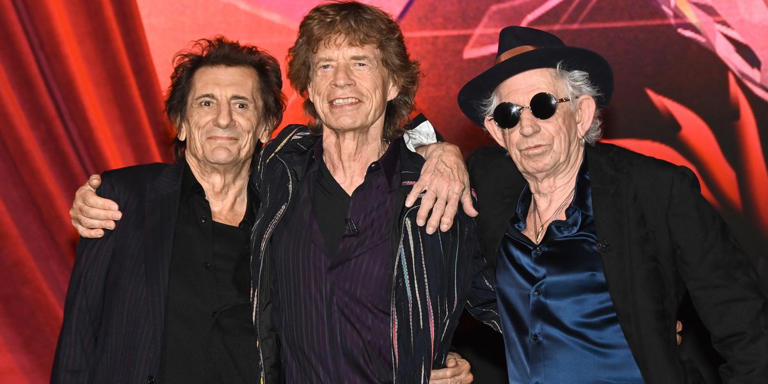
“To Doc, love and prescriptions, Keith Richards”: A mahogany Telecaster used by Keith Richards throughout the Rolling Stones’ iconic Some Girls era is up for auction (without its original neck) – for $400k
Built by the Rolling Stone’s go-to guitar tech Ted Newman Jones, the custom T-style has killer provenance but has been heavily modified since its Stones days
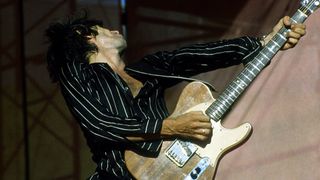
A 1977 Fender Telecaster -style guitar that was hand built for Keith Richards by his longterm guitar tech and luthier Ted Newman Jones is set to head to auction this Thursday (April 25).
The T-style build has been authenticated by Stones gear expert Andy Babiuk who confirmed it was the model used by Richards in the recording of 1978 album and Rolling Stones fan favorite, Some Girls .
Jones (aka Newman) built the instrument’s unique mahogany body and pickguard, then paired it with an authentic Fender rosewood neck, alongside Tele bridge bridge and neck pickups and a Fender bridge.
“The back of the body has a round pearl inlay with Newman's ‘N’ and a "77" for the year,” notes Babiuk in his appraisal.

The electric guitar was subsequently used in the Some Girls sessions and later on tour in support of the record – regarded by many as the quintessential Stones tour and the peak of their live powers.
As explained on the Newman Guitars site , Jones stood down from his position as Richards’ chief tech soon after, in order to focus on his burgeoning guitar store and luthiery business, which he had opened in Austin, TX. The business was founded with a $20,000 loan from Richards.
At this point it seems that Richards’ custom Tele underwent some significant changes, as Babiuk explains.
Get The Pick Newsletter
All the latest guitar news, interviews, lessons, reviews, deals and more, direct to your inbox!
“In 1981, The Who's guitar tech Alan Rogan started working with the Stones as their new guitar tech for the Tattoo You tour,” writes the vintage expert.
“It was at the beginning of the tour that Rogan had David Schecter build a Telecaster body made of rosewood and took the neck off the Newman Custom Built Telecaster and made a new rosewood Telecaster guitar for Keith to use on the tour.”

The new, all-rosewood model left the Newman T-style body without a home, at which point it was given to Schecter (yes, he who founded Schecter Guitar Research), who brought it back to life with a maple Fender neck (with a rosewood board) and a new bridge and pickup set.
It was later sold to a ‘radio station executive’, at which point Richards’ signed the instrument with the message ‘To Doc, Love and prescriptions, Keith Richards’.
The Keith Richards Some Girls custom T-style guitar carries a minimum bid of $400,000 and will go on sale on April 25, via Nate D. Sanders Auctions .
Thank you for reading 5 articles this month**
Join now for unlimited access
US pricing $3.99 per month or $39.00 per year
UK pricing £2.99 per month or £29.00 per year
Europe pricing €3.49 per month or €34.00 per year
*Read 5 free articles per month without a subscription
Prices from £2.99/$3.99/€3.49

Matt is Features Editor for GuitarWorld.com. Before that he spent 10 years as a freelance music journalist, interviewing artists for the likes of Total Guitar , Guitarist , Guitar World , MusicRadar , NME.com, DJ Mag and Electronic Sound . In 2020, he launched CreativeMoney.co.uk , which aims to share the ideas that make creative lifestyles more sustainable. He plays guitar, but should not be allowed near your delay pedals.
5 signs your guitar cable needs replacing (and 6 ways to make it last longer)
“The best solution for getting big valve amp tones onto recordings and for home practice in a small, portable format”: Blackstar promises classic tube tones from compact amps with the upgraded MK III Series
“Is it wrong in every possible way or do you dig it?” This guitarist transformed their John Mayer PRS signature guitar into a Stevie Ray Vaughan Number One Strat tribute – and now we really want a sunburst Silver Sky
Most Popular
Billie Eilish Would Like to Reintroduce Herself
By Angie Martoccio
Angie Martoccio
B ILLIE EILISH IS AT the bottom of a pool, held down by a large black weight attached to her shoulders. She is not, to put it mildly, enjoying herself. “I was basically waterboarding myself for six hours straight,” the 22-year-old superstar tells me later. “If I’m not suffering somehow, I don’t feel good about what I’m doing.”
Eilish is wearing baggy black pants beneath a pair of shorts, a button-down shirt over a thermal long-sleeve, a striped tie, arm warmers, a variety of silver rings, and a goth-studded bracelet, plus that anchor on her shoulders. She’s been submerging herself over and over for two minutes at a time, holding her breath for the duration, while the photographer William Drumm snaps her sinking beneath a white wooden door. Her eyes are completely open during those 120 seconds, with no goggles or nose plugs to help.
The point of all of this suffering? Eilish is shooting the cover for her third album, Hit Me Hard and Soft (out May 17). “If there’s one thing about me, it is I will put myself through hell and back for the shot,” she tells me. “I’ve always been like that, and I will continue to be like that. A lot of my artwork is painful physically in a lot of ways, and I love it. Oh, my God, I live for it.”
Editor’s picks
The 250 greatest guitarists of all time, the 500 greatest albums of all time, the 50 worst decisions in movie history, every awful thing trump has promised to do in a second term.
It’s been a weird stretch of time for Eilish. “What Was I Made For?” was way bigger than she anticipated; the past few months have been a blur of awards shows, and she’s ready to disappear for a few months, till the album hits, at least. “Bro, nobody can get enough of me,” she tells me. “Every second of every day is Barbie, Barbie, Barbie, Barbie, Barbie, which is great, but as soon as the Oscars are over and I lose, I’m going the fuck away. I’m literally gone.”
But she doesn’t lose: On March 10, she finds herself onstage at the Dolby Theater, accepting the award for Best Original Song — the same award she won in 2022 for “No Time to Die,” from the last James Bond movie — and becoming the youngest double-Oscar winner in history . “I had a nightmare about this last night,” she told the crowd. “I just didn’t think this would happen. I wasn’t expecting this. I feel so incredibly lucky and honored.”
Hit Me Hard and Soft dunks us headfirst back into that universe, from the deepest wallows of depression to the exhaustion that comes with the world speculating about her every move. There are no arachnids where they shouldn’t be, but getting in touch with her darker side has Eilish finally feeling like herself again. “I feel like this album is me,” she says. “It’s not a character. It feels like the When We All Fall Asleep, Where Do We Go? version of me. It feels like my youth and who I was as a kid.”
Although 2019 felt like a whirlwind of madness at the time, she has found herself missing it. “It was the best time of my life,” she says. “This whole process has felt like I’m coming back to the girl that I was. I’ve been grieving her. I’ve been looking for her in everything, and it’s almost like she got drowned by the world and the media. I don’t remember when she went away.”
That was most likely in 2020, at the dawn of Covid. “I was with myself so much that I couldn’t see myself objectively anymore,” she says. “And then I dyed my hair blond and I immediately was like, ‘Oh, I have no idea who I am.’” She recorded her second album, Happier Than Ever , in those confused months of lockdown. Its introspective, jazz-leaning songs got rave reviews, as did her glamorous dresses and new hairdo. But it lacked the incandescent brilliance of When We All Fall Asleep, and Finneas , her brother and closest collaborator, remembers the era as difficult and confusing. “In a weird way, that was a little like being in a tornado cellar, reading a cute little story,” he says. “It was a coping mechanism of an album.”
Immersing herself back into that darkness, combined with experimenting with new sounds — from a string quartet to glittery dance-floor trance — makes Hit Me Hard and Soft Eilish’s best album yet. She dabbled in belting on the title track to Happier Than Ever, but she brings it full-throttle here on several songs, finally putting all those lame “She’s just whispering” critiques to rest.
“She understands storytelling at such a young age,” says Donald Glover, who cast Eilish in his unnerving series Swarm , marking the musician’s acting debut. “And she’s authentic to her experience. I feel she’s living her life for herself.”
And now, after six hours in the water, the album has a cover. After the shoot wraps, Eilish proceeds to spend 20 straight minutes blowing her nose in her trailer. “It was just white snot blowing out, as if my insides were made of white goo,” she tells me later. She heads to her parents’ house and lies on their couch, finding she can barely walk. The weight has left bruises; her throat hurts; she finds it difficult to speak. She tries to ease her sinus pain with a nasal rinse. She washes her hair twice. She does a face mask and washes her ears in three cycles — first with hydrogen peroxide, then alcohol, followed by warm water. Then she eats some spicy food.
“Everyone was like, ‘You should go home and take a nice bath,’” Eilish recalls. “I was like, ‘I’ve been in water for fucking six hours!’” She takes one anyway, but not before noticing something weird in her parents’ backyard. “I saw these string lights, and each light had a circular orb around each light, a full aura. I felt like I was high and drunk, and I hadn’t slept in days. I was like, ‘Mom, what do those look like to you? Are you seeing that?’ She was like, ‘What the hell are you talking about?’”
She goes to bed and passes out cold for nine hours — so unusually long for her that Maggie almost goes into her room to make sure she’s OK. “I’ve never suffered that much post-shoot,” Eilish recalls. “I’ve never been in so much pain in my life. All for the shot. That’s what they say about childbirth. It was like 12 hours of horrible, agonizing pain for a lifetime of a great album cover. You know what I’m saying?”
AS A CHILD, Eilish’s biggest fear was water. She has traumatic memories — the swimming instructor whose method was to put her under and wait for her to “figure it out,” or the time she got sucked into the surf of the ocean and a lifeguard had to rescue her. She always found the courage to dive in, but for years, the very idea of swimming made her heart beat faster. And don’t even get her started on whales.
“Oh, my God,” she says. “How can anybody just accept that a whale exists, y’all? Those things are enormous. The noises they make. That shit is terrifying to me. Ew! Terrifying.”
Eilish isn’t able to find the video she’s looking for, but her own descriptions are vivid enough: She imagined luminous, glowing sea creatures, and butterflies of such a deep blue that they appear black. One color, fueled by her synesthesia, lingered in her mind throughout the making of the album: blue.
“Dude, what’s so interesting to me is that blue has always been my least-favorite color. Which is so stupid because my hair was blue for years,” she says. “But I didn’t mean for it to be — that was an accident. Somebody put too much toner in my white hair and suddenly it was lavendery-blue, and then I kept getting it blue, and then I was known as this blue-haired girl, and I fucking hated it. I went months and months trying to get the color out, and then I had this teal hair. But over the last couple of years, I’ve just been like, ‘Wait, blue is so who I am at my core.’”
The title Hit Me Hard and Soft derives from a conversation she had with Finneas, when she mistakenly thought the name of a synth in Logic Pro was called Hit Me Hard and Soft. “I thought it was such a perfect encapsulation of what this album does,” she explains. “It’s an impossible request: You can’t be hit hard and soft. You can’t do anything hard and soft at the same time. I’m a pretty extremist person, and I really like when things are really intense physically, but I also love when things are very tender and sweet. I want two things at once. So I thought that was a really good way to describe me, and I love that it’s not possible.”
For now, her black hair is loosely tied back, revealing diamond-studded dollar-sign earrings. She’s dressed entirely in black, including a T-shirt with a quote often attributed to Kurt Cobain: “No One Dies a Virgin, Life Fucks Us All.” When Eilish swivels the chair around, the top of her new back tattoo — black chaotic lines that run down her spine — peeks from under her shirt. Later, she tells me she actually kind of enjoyed getting it. “That shit saved me in a way,” she says. “I was shirtless the entire day, because it was my spine, and so I had no shirt and no bra on all day, and it forced me to get comfortable.”
To the left of Eilish sits a Petrof piano. On top sits a cue card, saved from a 2021 SNL appearance, that reads “Hi, I’m Billie Eilish and I’ll be the host and musical guest this week on Saturday Night Live.” Finneas’ setup also includes stacks of synthesizers, from a Sequential Prophet XL to a vintage Memorymoog, and a shelf of guitars both electric and acoustic. A Columbia gramophone in seemingly perfect condition sits near a velvet, terra-cotta-colored couch; by the door rests a limited-edition Xbox made in collaboration with Gucci. Beyond that is the bathroom, its walls covered in the platinum records he made with his sister.
Finneas moved out of his parents’ Highland Park home — made famous in R.J. Cutler’s documentary Billie Eilish: The World’s a Little Blurry, which chronicled Eilish’s rise to fame — and built the Astronave in 2019. You would think living apart from his sibling would hurt the creative process, but Finneas says the distance actually improved their dynamic.
“At home, I always had this feeling of ‘Should we be working?’” he says. “‘Should I tell her to come into my room and write a song, and so should I therefore not be playing a video game or FaceTiming my girlfriend? ’ So the delineation is nice. ‘Come on over. Working or not, you’re here and you know that that’s why you came. And if we’re not working, it’s because we’re uninspired and we’re going to go play pickleball or whatever.’”
Eilish’s gray rescue pit bull, Shark, hovers behind her, shaking his tail rapidly. He turns four tomorrow, and Eilish plans to celebrate with a birthday hike. But for now he’s hanging here, waiting to be picked up by Eilish’s assistant. “I know you had the most boring day of your life,” she tells him.
(The mug that broke, by the way, was a gift from her friend Hailey Bieber . “I wouldn’t be surprised if Billie’s soul has been here a lot of times,” Bieber tells me. “That’s really how I feel about her. She has established herself as a once-in-a-generation artist, and that is something that’s so special and so rare. I can’t imagine that I’m not going to be rocking out to Billie still when I’m in my fifties and sixties. That’s my girl.”)
Shark makes a cameo on the record — you can hear him breathing and jangling his collar on one of the tracks — but he’s not the only guest: Hit Me Hard and Soft features five people beyond the O’Connell siblings. They recruited their live drummer, Andrew Marshall, to record a layer of drums, and the Attacca Quartet, whom Finneas met while working on the score for Alfonso Cuarón’s upcoming Apple TV+ series, Disclaimer, is also featured. The quartet’s strings are the through line of Hit Me Hard and Soft, an intense yet delicate — you might say hard and soft — element that ties the 10 tracks together, with a string motif that bookends the album and also pops up in the middle.
This whole process has felt like I’m coming back to the girl I was [in 2019]. I’ve been grieving her.
Finneas joins us, taking a seat on the couch next to a Takashi Murakami rainbow pillow. They’re about to play me the album, and they casually let me know I’m one of the first people to hear it — no one besides the Interscope team and two of Eilish’s friends have experienced it. The deadline for mixing and mastering is a week away, so they plan on taking notes. “While you’re hopefully enjoying it, we’ll be sitting here grimacing, writing down what we think could be better about it,” jokes Finneas.
Eilish and Finneas call Hit Me Hard and Soft “an album-ass album.” It’s not a concept record, but it is a self-consciously cohesive set of songs, inspired by auteurist works from the past 15 years or so, like Coldplay’s Viva La Vida, Lana Del Rey’s Born to Die, Tyler, the Creator’s Goblin, Marina and the Diamonds’ Electra Heart, and Vince Staples’ Big Fish Theory. “I love being dropped into a universe on a person’s album,” Finneas says, “when you find a whole body of work that you love to listen to, top to bottom. I’m so much happier than when I hear a great song, when you’re like, ‘Oh, wow, I get to cook my whole dinner listening to this album.’”
I mention that album listening as an art form isn’t really a thing these days — most kids experience songs one at a time. Or, as Finneas points out, not even a whole track: “We’re not even at ‘song’ anymore,” he says. “We’re at the line from the second verse that blew up on TikTok. We’re mostly watching content in vertical that was made an hour ago — some person telling you their thoughts about something from an hour ago.” But he feels like old-school music listening is going to have a comeback, in the same way that cinema did last year with Barbenheimer. “Everything’s a counter-movement to the movement,” he says. “I think that’s going to lead back to immersing yourself in an album. I really do.”
This is also why Eilish isn’t releasing a single from Hit Me Hard and Soft. “I don’t like singles from albums,” she admits. “Every single time an artist I love puts out a single without the context of the album, I’m just already prone to hating on it. I really don’t like when things are out of context. This album is like a family: I don’t want one little kid to be in the middle of the room alone.”
As soon as they hit play, I realize Eilish is right. The opening track, the title of which I’ve agreed not to reveal, plays like a sister song to “What Was I Made For?” Eilish has talked about how she and Finneas experienced serious writer’s block before coming up with the Barbie track, but what she hadn’t revealed was that this album opener was born first — the catalyst to writing the hit. It carries the same sparse fragility as “What Was I Made For?,” featuring Eilish’s whispered vocals over a gorgeous melody. But the lyrics are even more devastating, as Eilish tackles the misconception that losing weight signifies happiness.
A COUPLE OF WEEKS LATER, Eilish and I take Shark on a mile-long walk. At one point, we encounter an elderly woman retrieving her mail. She glances at Eilish’s outfit — black skeleton sweatpants, a Biggie Smalls shirt, and a pair of black skate shoes that are a collaboration between Osiris and Fuck the Population. “I like your Halloween outfit!” she tells Eilish. The pop star thanks her, uncontrollably laughing as we pass. “Damn,” Eilish says. “She got my ass!”
Even with a security team and her pit bull, Eilish has had frightening experiences, like stalkers who showed up to her home unannounced. Shark might be medicated with anti-anxiety meds like trazodone and Reconcile, but he knows his duty around Eilish: “Just because he’s anxious doesn’t mean he couldn’t rip your face off if you come into my house,” she says. It’s the ugly part of fame — the downside that normal, nonfamous people rarely think about. I tell Eilish how sorry I feel for her, that these events sound like the plot of a horror film.
“Thank you, dude,” she says, chuckling. “It’s not in the job description, for sure. I had really scary things happen in my personal life and my safety was compromised a couple of times, and that’s a big part of my life. That is something I just have to live with. But I don’t know, it really made me resentful of my life, when you can’t even be in your own house.”
Eilish is trying to go out in public more. It’s part of her effort to get her old self back — the When We All Fall Asleep -era Billie she’s been chasing, whom she affectionately calls “2019 me.” It also stems from last summer, when she suffered a bout of depression she describes as “realer than it’s ever been.” Later, she shows me a page in her journal, where she wrote two lines in all-caps: “I know I’m lucky/But I’m so unhappy.”
Eilish credits Maggie; her father, Patrick; Finneas; and Zoe Donahoe, her best friend since childhood, with keeping her afloat during this time. She realized one thing for certain: She had to get out of the house more. “I hit a turning point,” she says. “I had this moment of like, ‘Oh, my God, I haven’t had fun in seven years.’ Truly. I had this illusion that I had, because who experiences going to the Grammys at basically 17 and winning five? But in life, I realized I had really not experienced that much. I didn’t go outside for five years. How was I supposed to have any experiences?”
She decided to start small: the grocery store. A year ago, she walked into Lassens, a natural-grocery chain in Los Angeles she hadn’t been to since she was a child. She went to Erewhon, the celebrity grocery store, in Silver Lake. She saw Turnstile in concert. She went to Target, CVS, some thrift stores. She went to parties. She went with Donahoe to get ice cream, walking inside the shop instead of hanging back in the car like she normally does. And just the other night, she went to a book reading with Mustafa the Poet (she was late and didn’t arrive until the end, but we’ll count it).
I don’t like singles from albums. This album is like a family: I don’t want one kid in the room alone.
“I’m afraid,” she says. “For a fucking good reason. I’m afraid of people, I’m afraid of the world. It’s just scary for somebody like me, and even if it’s not scary, it means being on and being vulnerable and being seen and being filmed and whatever. But with that all in mind, I have been choosing to do the thing that scares me more. I am biting the bullet and existing in the world for once.”
Eilish and Finneas were both struck by something John Mayer told them back in 2019, when her newfound fame was overwhelming: “I remember him saying, ‘It feels like it’s going to feel like that forever, but it will go away, and in a way you want to take it in, because it will cool off, and people won’t act like she’s Bigfoot when they see her,’ ” Eilish says. “That really stuck with me, because I was like, ‘No, it is going to feel like this forever, and everywhere I go, people are going to look at me like they just saw a ghost.’”
Eilish says Mayer’s prophecy hasn’t totally come true yet, but she’s hoping the shock of seeing her in public will subside the more she goes out. “If I do it right, I can exist,” she says. Finneas uses Trader Joe’s as an example: “If you go four times, somebody in the store is going to go, ‘Oh, my God, I recognize that person.’ And they’re going to say that to their friend, and their friend’s going to be like, ‘Yeah, they’re here all the time.’ You normalize yourself, which is the right way to do it.”
“I don’t think people understand, and there is no way for people to understand,” says Eilish’s friend Zoë Kravitz. “The feeling of, everyone’s staring at you and then you have to do this thing where you either acknowledge it and wave like you’re the president, or you have to pretend you don’t know everyone’s staring at you, is energetically draining. A lot of artists go through the space where you’re just like, ‘I just would rather stay inside. I look like shit today, so I don’t want to go out and go on a walk, even though it’s pretty outside.’ Those little moments get taken away from you.”
There had been another factor keeping her inside: By not going out, she remained an enigma. “That used to be a thing I would strive for,” she says. “I used to be so obsessed with this mysteriousness, and I think that’s 100 percent why I didn’t make any friends, because I didn’t want anyone to know me, because I wanted everyone to think of me as this mysterious, cool person. I loved the idea of people feeling that way, but then I thought, ‘Oh, here I am sitting alone in my room, loving the feeling that everybody thinks I’m really cool, but I’m not actually getting anything out of that. I’m not enjoying anything in my life at all.’”
She had what she describes as an existential crisis at her 20th-birthday party. “I looked around the room and every single person was an employee of mine,” she says. “I was like, ‘Oh, shit, I literally don’t have friends. I don’t have people that see me as an equal. I don’t have people that aren’t afraid of me.’” She couldn’t relate to songs that referenced friendship — the Beatles’ “With a Little Help From My Friends,” Lily Allen’s “Smile” — and she says listening to them made her feel sick to her stomach.
Around this time, Kravitz would often ask Eilish to hang out, but Eilish would never follow through. Eventually, the actress called Eilish out on it. “I remember her being like, ‘Why won’t you hang out with me?’” Eilish recalls. “And I was like, ‘Because when you get to know me, you’re going to know me, and that’s so terrifying to me, because then I’m not just, like, this person you think is cool. And what if you don’t like me?’ I was obsessed with the idea of being an anomaly, being this Billie Eilish character. Anyway, I have since thrown away that idea, and been hanging out with people. If they get to know me, that’s OK. That’s good.”
“We’re both Sags, so I totally understand the flightiness because I can be kind of similar,” Kravitz says. “I think I probably just told her to shut up and get over it. And we’ve been really good friends ever since. It’s actually the opposite of what she said: The more I get to know her, she gets better and better.”
It’s important for Eilish to not appear bougie. She hates the idea that someone as wealthy as her should have a personal chef. “Can’t we make a grilled cheese or something by ourselves?” she jokes. She owns an electric Porsche, but does not have a driver. She doesn’t vacation very often (“Vacation is a scam,” she says). And she certainly doesn’t have a private jet. So what’s the one bougie thing Billie Eilish does have? She pauses, taking a minute to think. “The bougiest thing I have … um …” Her lips form into a smile. “Money.”
Eilish has always been an active person. She loves to work out — sometimes obsessively — and she recently got back into dancing, which was her primary creative outlet before she injured her hip at 13.
I hit a turning point. I had this moment of like, ‘Oh, my God, I haven’t had fun in seven years.’ Truly.
I ask her what she likes to do to decompress. “Sex,” she says. “I basically talk about sex any time I possibly can. That’s literally my favorite topic. My experience as a woman has been that it’s seen in such a weird way. People are so uncomfortable talking about it, and weirded out when women are very comfortable in their sexuality and communicative in it. I think it’s such a frowned-upon thing to talk about, and I think that should change. You asked me what I do to decompress? That shit can really, really save you sometimes, just saying. Can’t recommend it more, to be real.”
Eilish would also like a word about masturbation, which she says is equally taboo for women. Self-pleasure, she says, has made her more confident. “TMI, but self-pleasure is an enormous, enormous part of my life, and a huge, huge help for me,” she says. “People should be jerking it, man. I can’t stress it enough, as somebody with extreme body issues and dysmorphia that I’ve had my entire life.”
Eilish has been wanting to discuss this with me, and now that she’s gotten it all out, she exhales and inches back farther on the couch. “I should have a Ph.D. in masturbation,” she says.
Eilish and I spend a lot of time talking about the new era she is about to kick off, and how she’ll promote Hit Me Hard and Soft while prioritizing her mental health, privacy, and well-being. With all of that in mind, I wonder if she’s ready for journalists to pepper her with questions about the album’s subject matter, particularly the sexual nature of “Lunch.” “That song was actually part of what helped me become who I am, to be real,” Eilish says. “I wrote some of it before even doing anything with a girl, and then wrote the rest after. I’ve been in love with girls for my whole life, but I just didn’t understand — until, last year, I realized I wanted my face in a vagina. I was never planning on talking about my sexuality ever, in a million years. It’s really frustrating to me that it came up.”
Eilish is referring to her interview with Variety last fall, in which she mentioned she was attracted to women. The quote — “I’m attracted to them for real” — became a national headline. The following month, Eilish attended Variety’ s Hitmakers event in L.A. While on the red carpet, she was asked if she intentionally came out in the story. “No, I didn’t,” she told them. “But I kind of thought, ‘Wasn’t it obvious?’” Eilish then posted about it on Instagram, with a caption that read, “Thanks Variety for my award and for also outing me on a red carpet at 11 a.m. instead of talking about anything else that matters. I like boys and girls leave me alone about it please literally who cares.”
As for that red-carpet quote that made all the headlines, Eilish says she tried to think of a response that would be entertaining for her fans and the internet. “I went into Billie Eilish interview mode, [like], ‘Oh, I don’t care. Yeah, I’ll say whatever. Wasn’t it obvious?’” she says. “And then afterwards I was like, ‘Wait. It wasn’t obvious to me.’”
Thinking about it now, she draws a bigger lesson from that moment. “I know everybody’s been thinking this about me for years and years, but I’m only figuring out myself now,” she says. “And honestly, what I said was funny, because I really was just saying what they’ve all been saying.” She adds that she liked the journalist she was talking to and didn’t want to be rude. But she still felt exploited. “Bro, I have asthma out here,” she says. “I fucking can’t take a breath.”
If Eilish had the opportunity to do it over again on the red carpet, she says, she wouldn’t have answered the question. But she acknowledges it could have been worse. “I’m lucky enough to be in a time when I’m able to say something like that and things go OK for me,” she says. “And that’s not how a lot of people’s experience is.”
TWO DAYS AFTER THE INTERVIEW, Eilish calls me from her cellphone. She’s anxiously driving around Los Angeles, unable to shake the feeling that she told me too much. She laughs when I tell her where I am (the handbag department of Saks Fifth Avenue in New York, shopping with my mother-in-law), and we make plans to meet up again the following week.
Back in L.A., Eilish greets me at a different studio; she doesn’t work in conventional studios, but she enjoys hanging out in them. She’s wearing a black Monster Energy drink T-shirt that reaches to her ankles (she says it’s Willy Chavarria, the game-changing New York fashion designer). She takes me into the control room basked in blue lighting, where we sit on opposite ends of a couch.
Eilish says that our talks were therapeutic for her. They were the first non- Barbie interviews she’d done in more than a year, and she was more than ready to discuss this new music she’s been sitting on. But she’s also been forced to rethink how much of herself — and her art — she’s willing to give away.
“I feel like I’ve been beaten down to feel this way,” Eilish tells me. “The way that the world has treated me into feeling extremely anxious about everything that I say. It’s really exhausting when anything I say can become a headline, completely taken out of context, and it leads to constant paranoia.”
She wants to clarify a few things. Most of all, she has zero interest in being a spokesperson for mental health. “I think it’s really weird when you are in the middle of something and somebody asks you to be the advocate for the thing you’re in the middle of,” she says. “I understand that it’s important, and I understand that it’s an epidemic and it needs to be talked about, but I don’t want to fucking be the role model for depression. What happens when I do some shit y’all aren’t going to like?”
If Eilish wants to be an inspiration for anything, let it be her commitment to environmentalism. She’s spoken out against the climate crisis and promoted sustainability on tour, partnering with her mom’s nonprofit, Support + Feed, which aims to combat climate change and increase food security through a plant-based food system. “I have never had an interest in being a role model, ever,” she says. “If you’re going to think I’m a role model, think I’m a role model in terms of trying to save the environment, and being more conscious of the way that you live, and your carbon footprint, and your contribution to animal agriculture.”
Production Credits
Photography Direction by EMMA REEVES . Video Direction by KIMBERLY ALEAH . Styling by SPENCER SINGER . Produced by OBJECT & ANIMAL . EMI STEWART and ALEX BRINKMAN , Executive Producers; REESE LAYTON , Creative Producer; JAMI ARCEO and EVAN THICKE , Video Cover Producers. Video Cover DP: BEN MULLEN Video Cover 1 st Assistant Camera: BRADLEY WILDER . Video Cover 2 nd Assistant Camera: CHASTIN NOBLETT . Video Cover Editor: NEAL FARMER . Tailored by ANNA TELCS . Hair by BENJAMIN MOHAPI for BENJAMIN SALON . Makeup by EMILY CHENG at THE WALL GROUP . Manicure by ERIN MOFFAT at ART DEPARTMENT . Production Designer: GRACE SURNOW . Leadman: KEVIN LOPEZ . Stunt Coordinator: SARA BEKO . Stunt Utility: NATHAN KAYN . Eco Set Representative: MAYA EL-HAGE . Set Medic: JOSE TONY BAUTISTA . Object & Animal Production assistance: DANIELLE DARLING , BEN NAKHUDA , IZZY STRAUSS and ISAAC FRIEDENBERG . Digital Technician: CALEB SHANE . Photographic assistance: ANDRES CASTILLO and SAÚL BARRERA . Styling assistance: JEMMA FONG and RAY BRAUNGART . Set Dressers: EVELYN JIMENEZ ; LEO JOHNSON and T. MARSH .
Most Popular
Anne hathaway says 'gross' chemistry test in the 2000s required her to make out with 10 guys: that's the 'worst way to do it' and 'now we know better', how i did it: judith regan remembers the day o.j. simpson (almost) confessed, prince william’s bond with his in-laws sheds a light on his 'chilly' relationship with these royals, saweetie exposes dm from quavo following latest chris brown diss that shades her, you might also like, meta q1 revenue jumps 27% and profit doubles to $12.4 billion, stock falls on weak outlook, queen letizia of spain goes for sharp shoulders in pink midi dress with floral appliqués for palace luncheon, the best yoga mats for any practice, according to instructors, ‘touch’ trailer: baltasar kormákur’s epic romance spans half a century looking for a lost love, angel city fc renews three-year deal for back of the jersey sponsor.
Rolling Stone is a part of Penske Media Corporation. © 2024 Rolling Stone, LLC. All rights reserved.
Verify it's you
Please log in.

IMAGES
COMMENTS
View Rolling Stones Schedule and Order Tickets Online. Rolling Stones Tickets on Sale. Buy Tickets With Vivid Seats Today.
Buy Rolling Stones Tour 2024 Tickets. View All Shows & Locations On Sale Now. View Tour Dates Online, Browse Seating Charts To Find The Lowest Prices.
The Rolling Stones' American Tour 1981 was a concert tour of stadiums and arenas in the United States to promote the album Tattoo You.It was the largest grossing tour of 1981 with $50 million in ticket sales. Roughly 2,5 million concert goers attended the concerts, setting various ticket sales records. The 5 December show in New Orleans set an indoor concert attendance record which stood for ...
Tattoo You is a studio album by the English rock band the Rolling Stones, released on 24 August 1981 by Rolling Stones Records.The album is mostly composed of studio outtakes recorded during the 1970s, and contains one of the band's most well-known songs, "Start Me Up", which hit number two on the US Billboard singles charts.A combination of touring obligations and personal feuding between ...
The Rolling Stones began a celebrated tour on Sept. 25, 1981 at JFK Stadium in Philadelphia. ... Bright U.S. 'Tattoo You' Tour. ... the Rolling Stones had an album, but no tour. A year later ...
40TH ANNIVERSARY EDITION. 40 years after it's original release, Tattoo You returns with an all-new 2021 master, alongside 9 new unheard tracks (listen to 'Living In The Heart Of Love' now) & bonus live cuts. This is a celebration of one of the Stones most iconic albums - which includes monster hits 'Start Me Up' & 'Waiting On A ...
It would be another two years before the Stones made another album, and another seven before they would tour again. Tattoo You marked an end of an era for the Stones. They haven't had another No ...
Discuss. On its 40th anniversary, the album that gave us "Start Me Up" cries out for a reexamination. An expanded edition lets us do just that. Few of us knew it at the time, since its credits ...
Get THE ROLLING STONES 'TATTOO YOU' 5-LP BOX SET (2021 Remaster) in the Goldmine store by clicking above. ... disco opuses such as "Dance" and "Emotional Rescue" and endless jams such as "Hey Negrita" all had their place in the Stones' 17-year canon. But if you were talking drop-dead dynamos, it was the riff-and-refrain songs that ruled he ...
Tattoo You. In 1981, Mick Jagger and Keith Richards were barely speaking, much less writing music together. But with an impending tour, they needed a new record. How the album—famously ...
Tattoo You Tour 1981 Oct 11, 1981 (42 years ago) Los Angeles Memorial Coliseum Los Angeles, California, United States. Scroll to: Scroll to: Top; Bands; Details; Details; Genres; Setlists; Videos; ... Buy tickets to Rolling Stones / J Geils Band / George Thorogood & the Delaware Destroyers / Prince:
The 40th anniversary edition of 'Tattoo You,' the Rolling Stones' last great studio album, includes nine bonus tracks and a full concert.
We take a look at these tunes and others in our track-by-track guide to Tattoo You below. 1. "Start Me Up". "Start Me Up," Tattoo You 's opening tracks and one of the Stones' most all-time popular ...
Welcome to the Rolling Stones Tattoo You experience. Immerse yourself in the history of the album, told by the band and those closest to them. ... With a tour of the US and then Europe looming the Stones didn't have enough time to record a new album and be ready to get back out on the road - so the decision was made to quickly get in the ...
The Rolling Stones decided to craft an album of outtakes when the band was scheduled to tour soon, but they needed to quickly release a new album to promote their tour. They built "Tattoo You" from a series of outtakes that were composed throughout the 70's, but the album possesses an 80's ...
August 19, 2021. ·. 7 min read. Just weeks before their first-ever tour without drummer Charlie Watts kicks off, the Rolling Stones have announced the 40th anniversary, expanded deluxe editions ...
As Jagger related in a 1995 interview with Rolling Stone, Tattoo You was hastily assembled in order for the Stones' to have product to hawk on its upcoming monster tour of American arenas and ...
The album was released 24 August 1981. It won the 1982 Grammy award for Best Recording Package. tattoo you cover. Tupai Cupa. The cover art, like the cover of Goat's Head Soup, featured Mick Jagger on the front and Keith Richards on the back. No images of Bill Wyman, Charlie Watts, or Ron Wood are found anywhere on the album.
Rolling Stones, The > Tour Statistics. Song Statistics Stats; Tour Statistics Stats; Other Statistics; All Setlists. All setlist songs (2113) Years on tour. Show all. 2023 (1) 2022 (14) 2021 (16) 2019 (17) 2018 (14) 2017 (14) 2016 (19) 2015 (17) 2014 (30) ... Average setlist for tour: Tattoo You. Setlist. share setlist Under My Thumb. Play ...
Rolling Stones albums song-by-song: TATTOO YOU *By Marcelo Sonaglioni. That's right, we might say time wasn't exactly on the Stones side in late 1980. The group had previously reached a consensus to embark on a tour across the United States in 1981, followed by additional performances in European countries during the next year.
Topping the US charts for nine weeks, Tattoo You was number one for longer than any other Stones album. The lead single "Start Me Up" fueled its success, on ...
Still Life: Wembley Stadium 1982 is an unmissable memento of the band's London show in June of that year on the Tattoo You tour. The mighty 26-track set is packed with Stones mega-hits, including an opening 'Under My Thumb' and all-time greats such as 'Let's Spend The Night Together', 'Honky Tonk Women' and 'Brown Sugar'.
August 20, 2021. The Rolling Stones celebrate 40 years of ' Tattoo You ' with a reimagining of their seminal '81 album. Featuring a 2021 remaster of the classic album alongside 9 new unheard tracks, live cuts & more. Coming October 22 nd ,pre-order now. SHOP ALL TATTOO ITEMS HERE.
The Rolling Stones' Last Great Album, 'Tattoo You,' Adds Bonus Tracks and Full Concert in 40th Anniversary Edition: Album Review Jem Aswad October 22, 2021 at 11:25 AM · 4 min read
The Rolling Stones' 1981 album Tattoo You will be reissued in October across six physical formats including a five-disc super deluxe edition. ... Wembley Stadium 1982, a memento of the band's London show in June that year from the Tattoo You tour. The vinyl record in the super deluxe is a picture disc.
The 80-year-old Jagger, Keith Richards, and Ronnie Wood begin their Stones Tour '24 across North America on April 28 in Houston. The iconic rock group will play 19 shows in total through mid ...
The T-style build has been authenticated by Stones gear expert Andy Babiuk who confirmed it was the model used by Richards in the recording of 1978 album and Rolling Stones fan favorite, Some Girls. Jones (aka Newman) built the instrument's unique mahogany body and pickguard, then paired it with an authentic Fender rosewood neck, alongside ...
A year after getting out of a six-year relationship, Taylor's got bad men on the brain. ... You can hear that it's an album made in the aftershock of the Eras Tour, which was bigger than even ...
Buy Rolling Stones* - Tattoo You - Polydor, Rolling Stones Records - CD, Album, RE, RM, SHM - UICY-20198, includes Start Me Up, Hang Fire, Slave, Little T & A, Black Limousine, ... -The same personalized customer service you've come to expect from our team over the years. -At least one free shipping option to every region (10 items or more ...
Billie Eilish talks her new album 'Hit Me Hard and Soft,' prioritizing her mental health, and trying to live a normal life as she navigates fame.